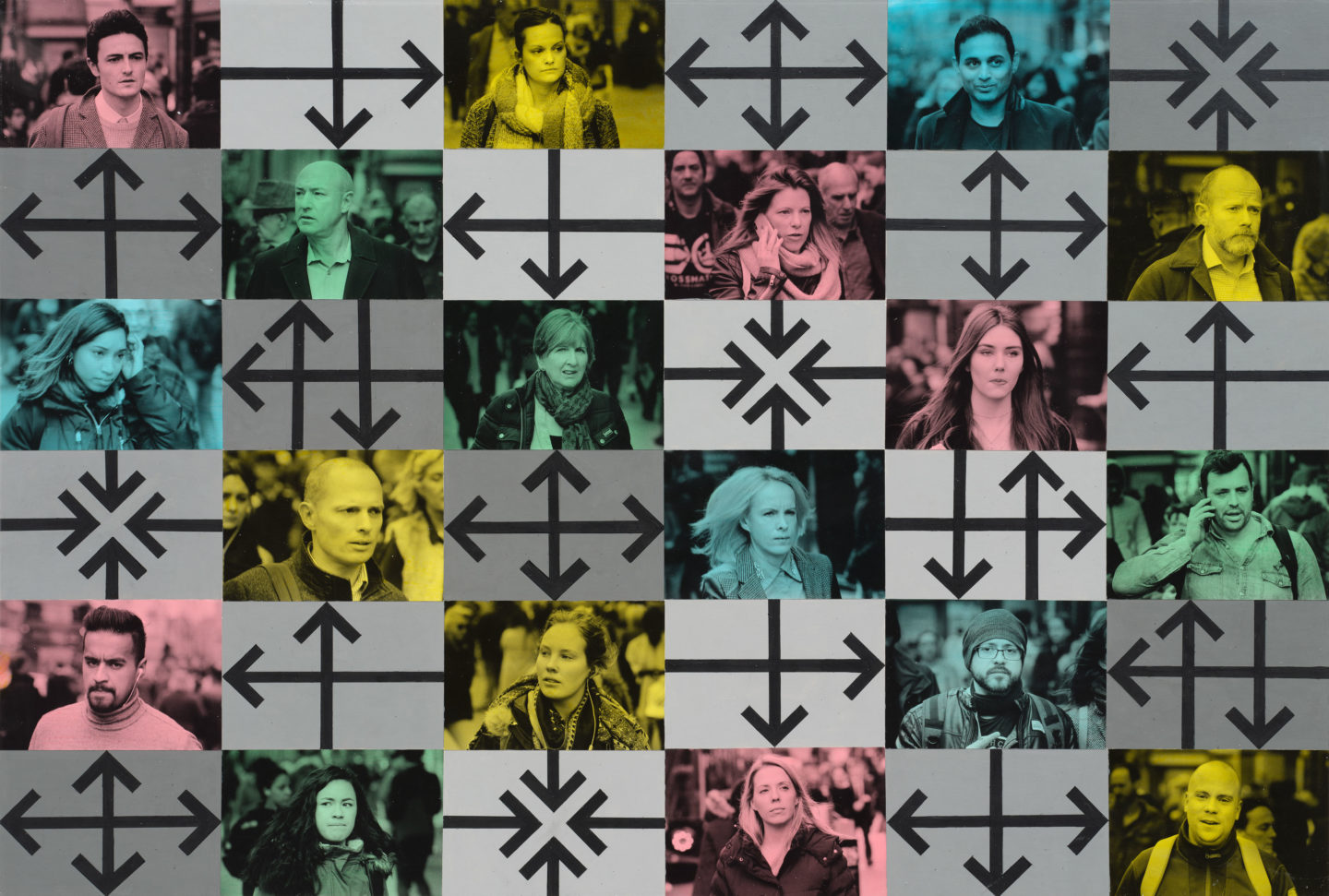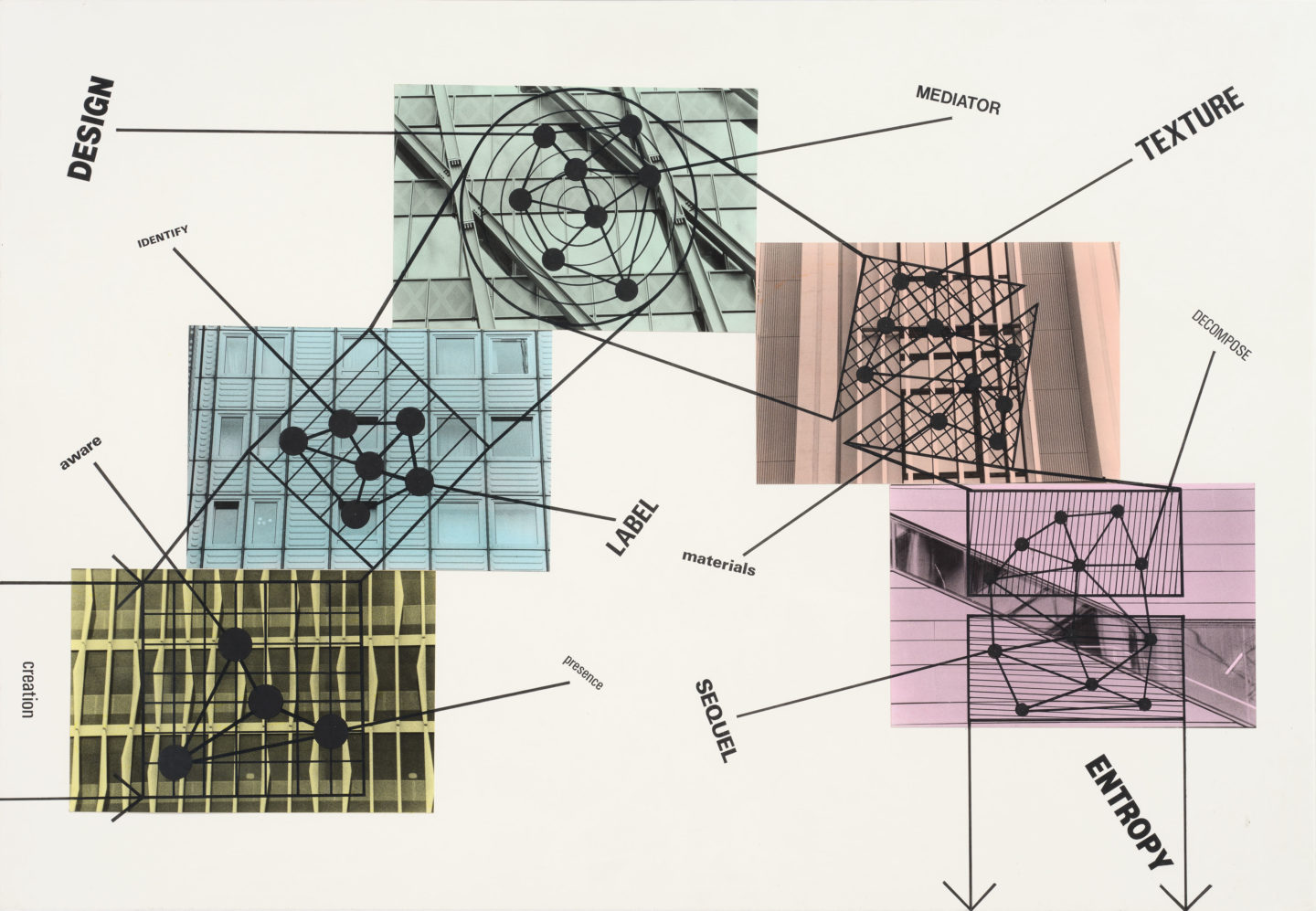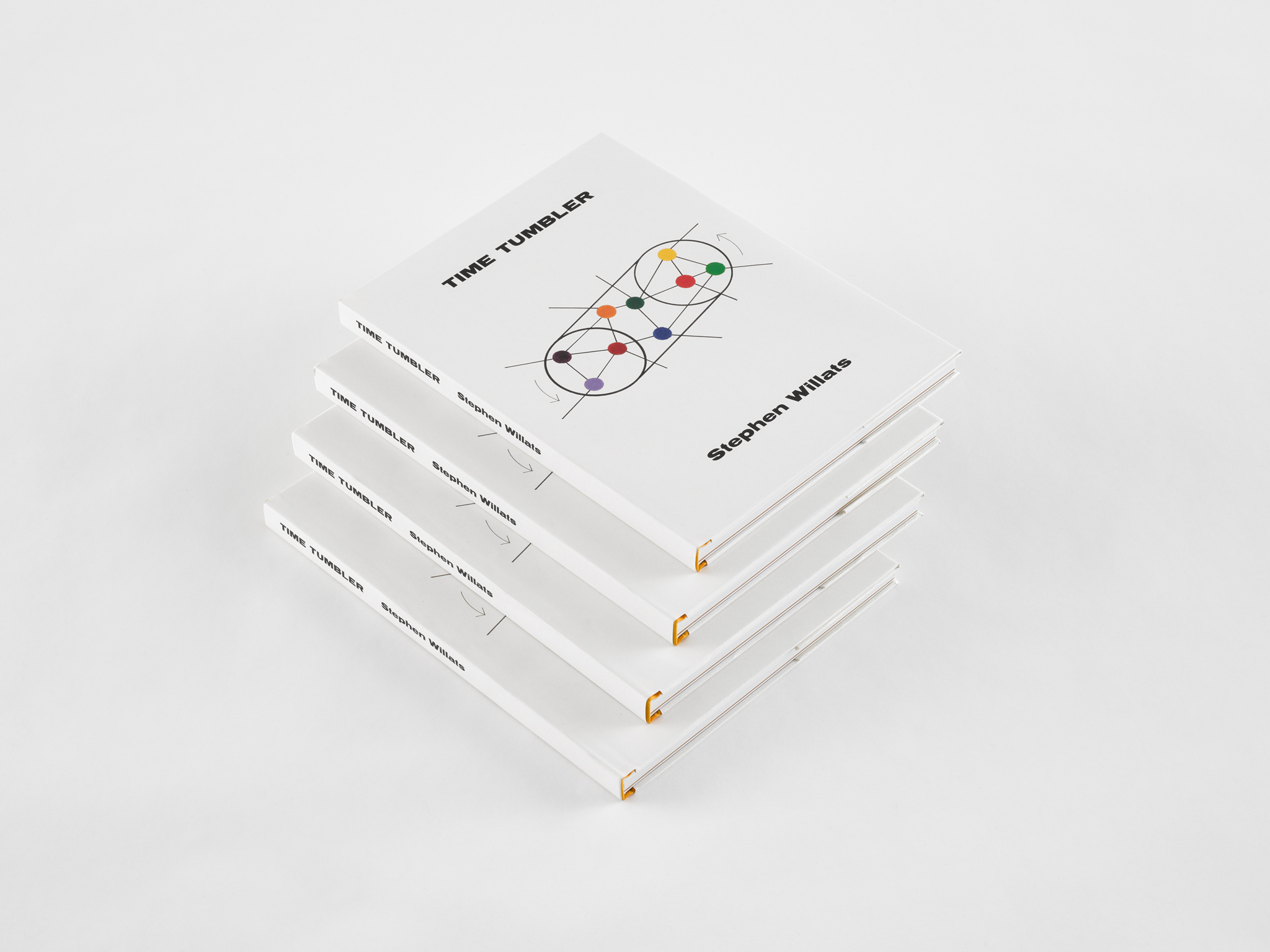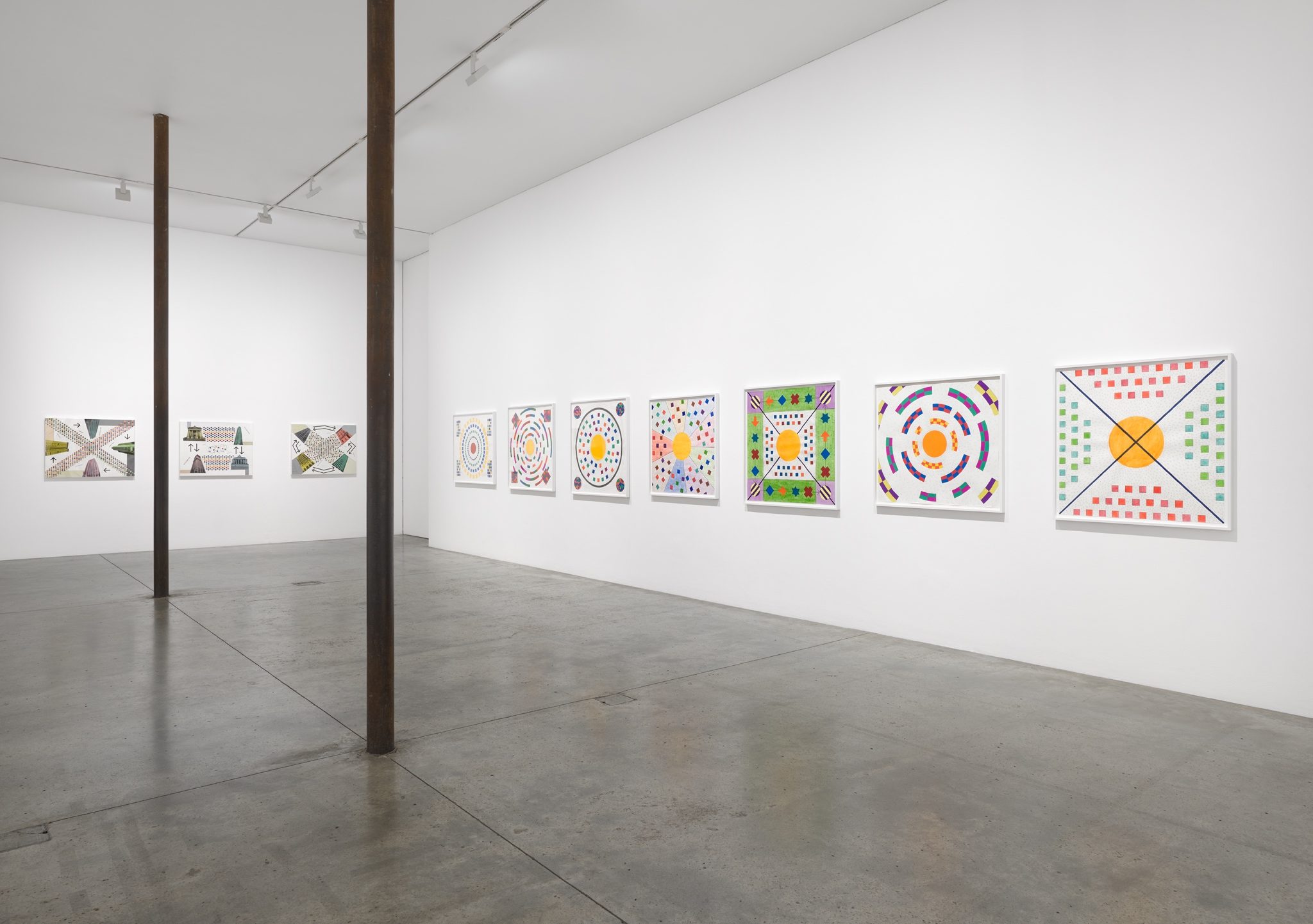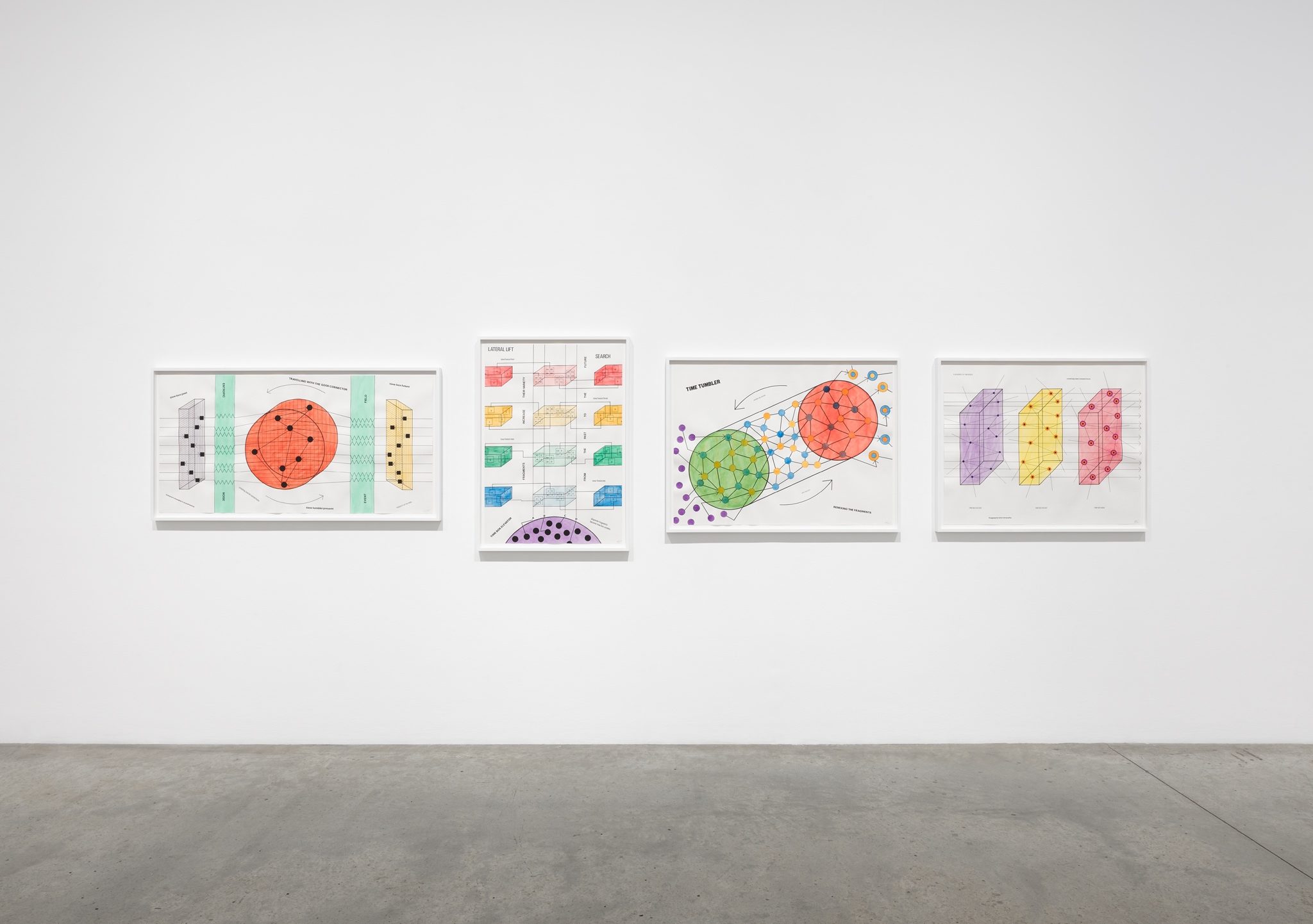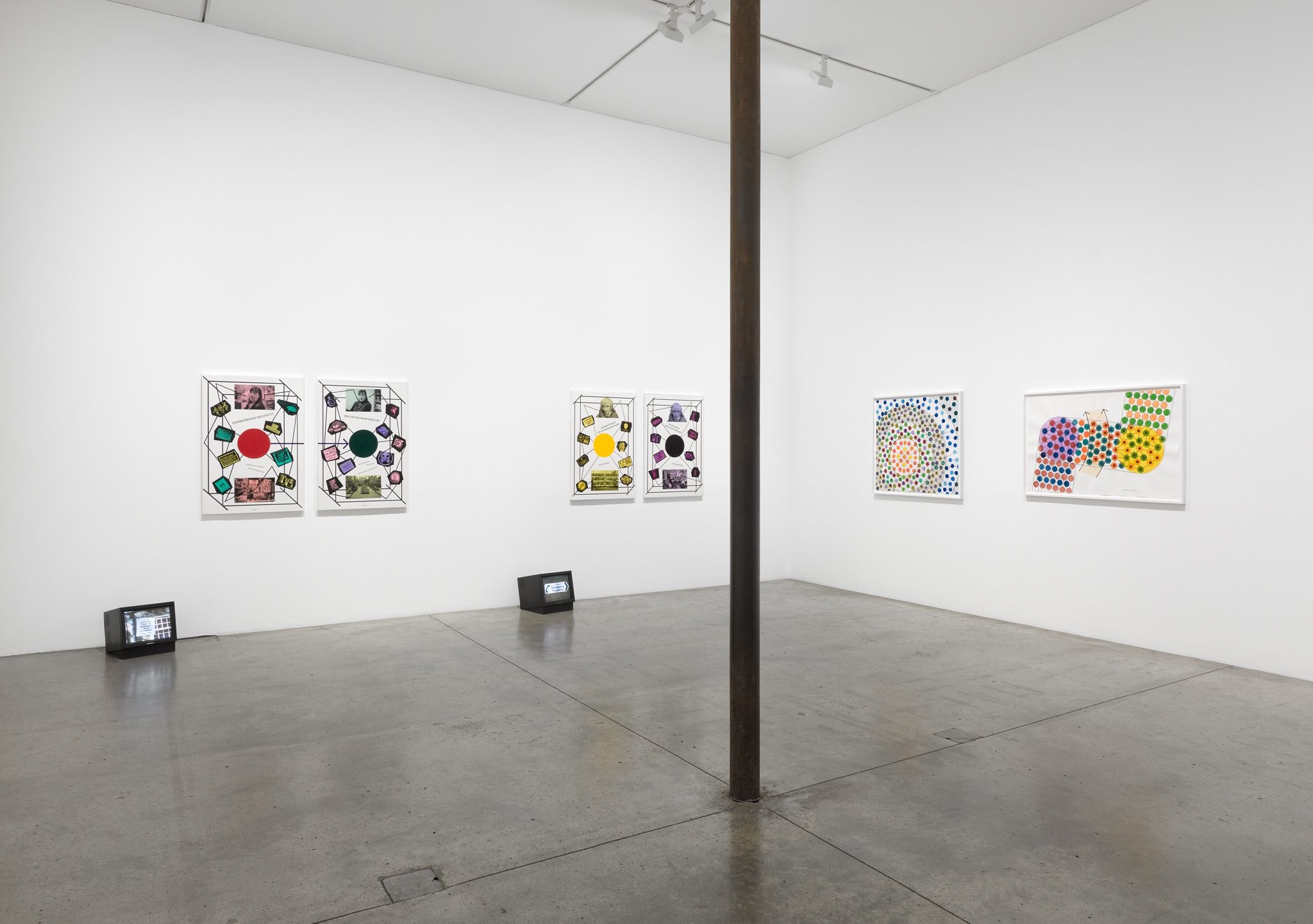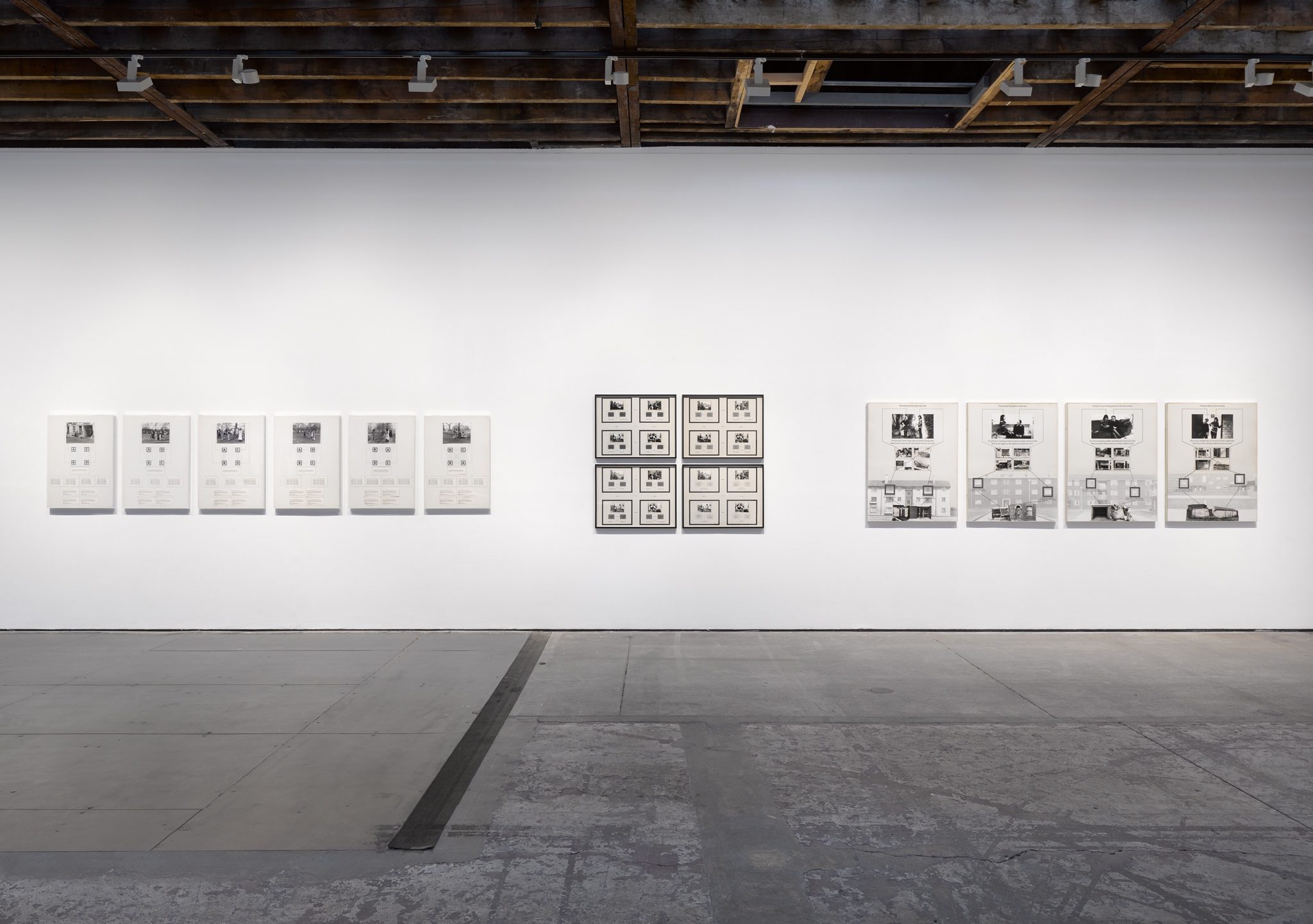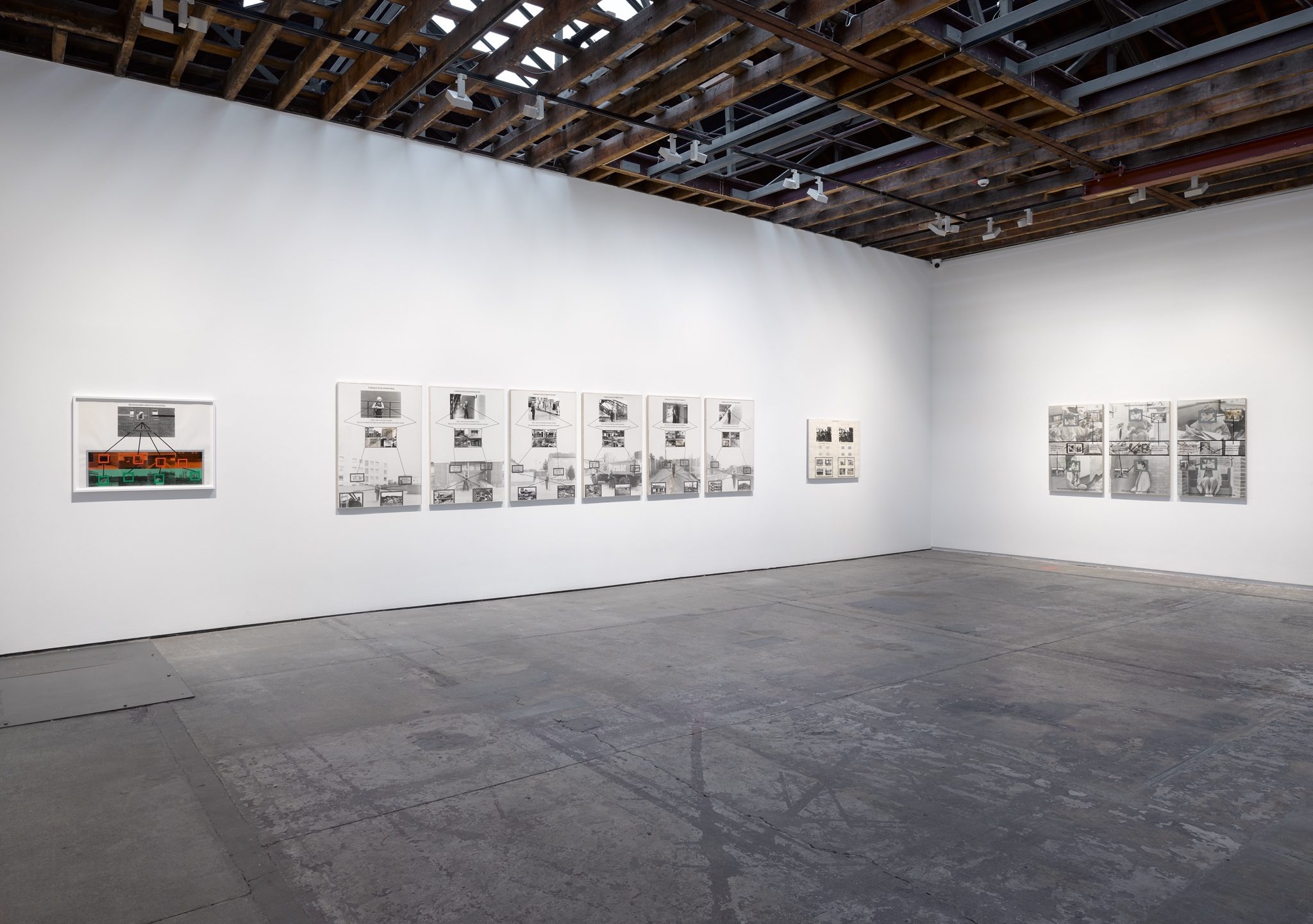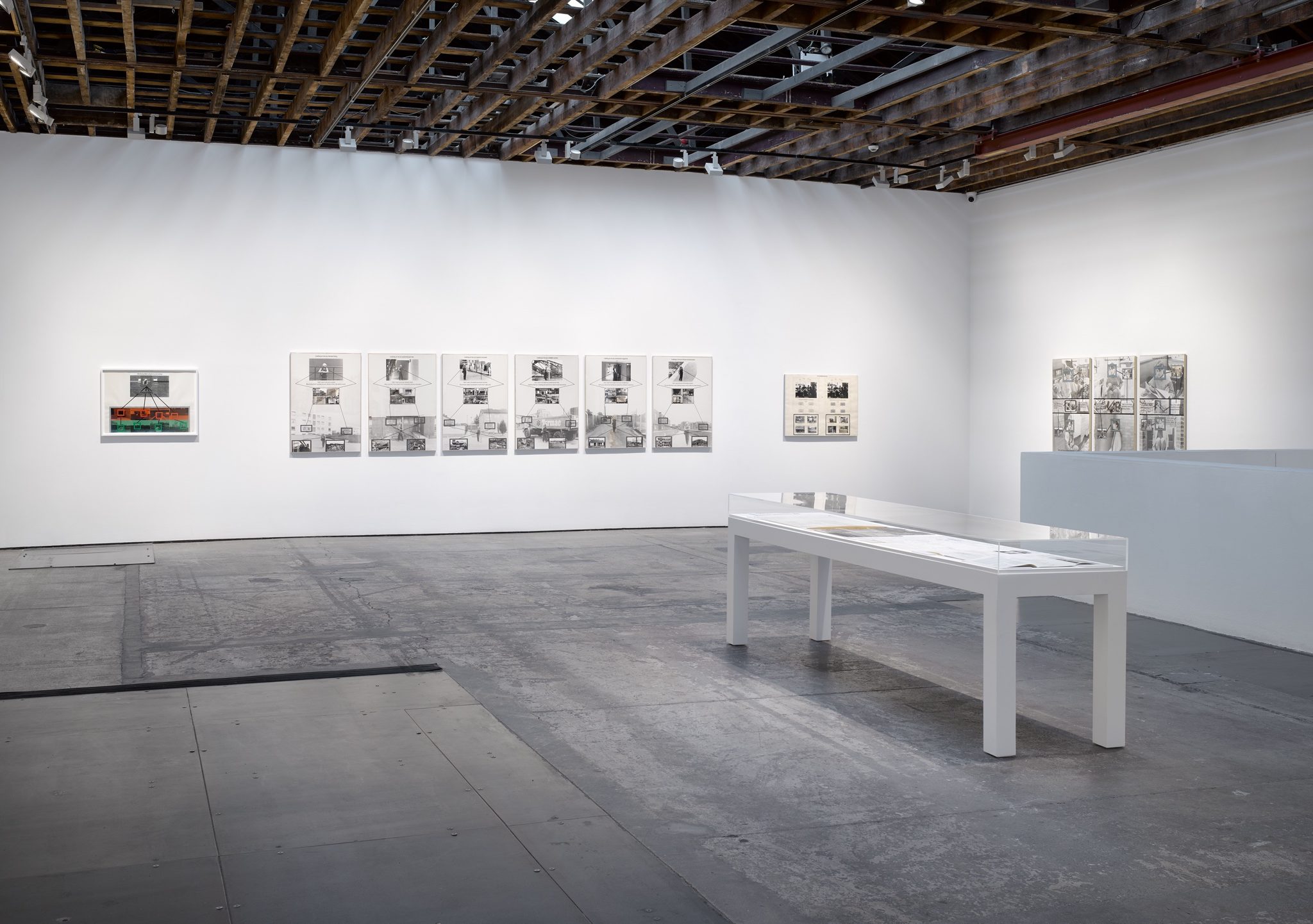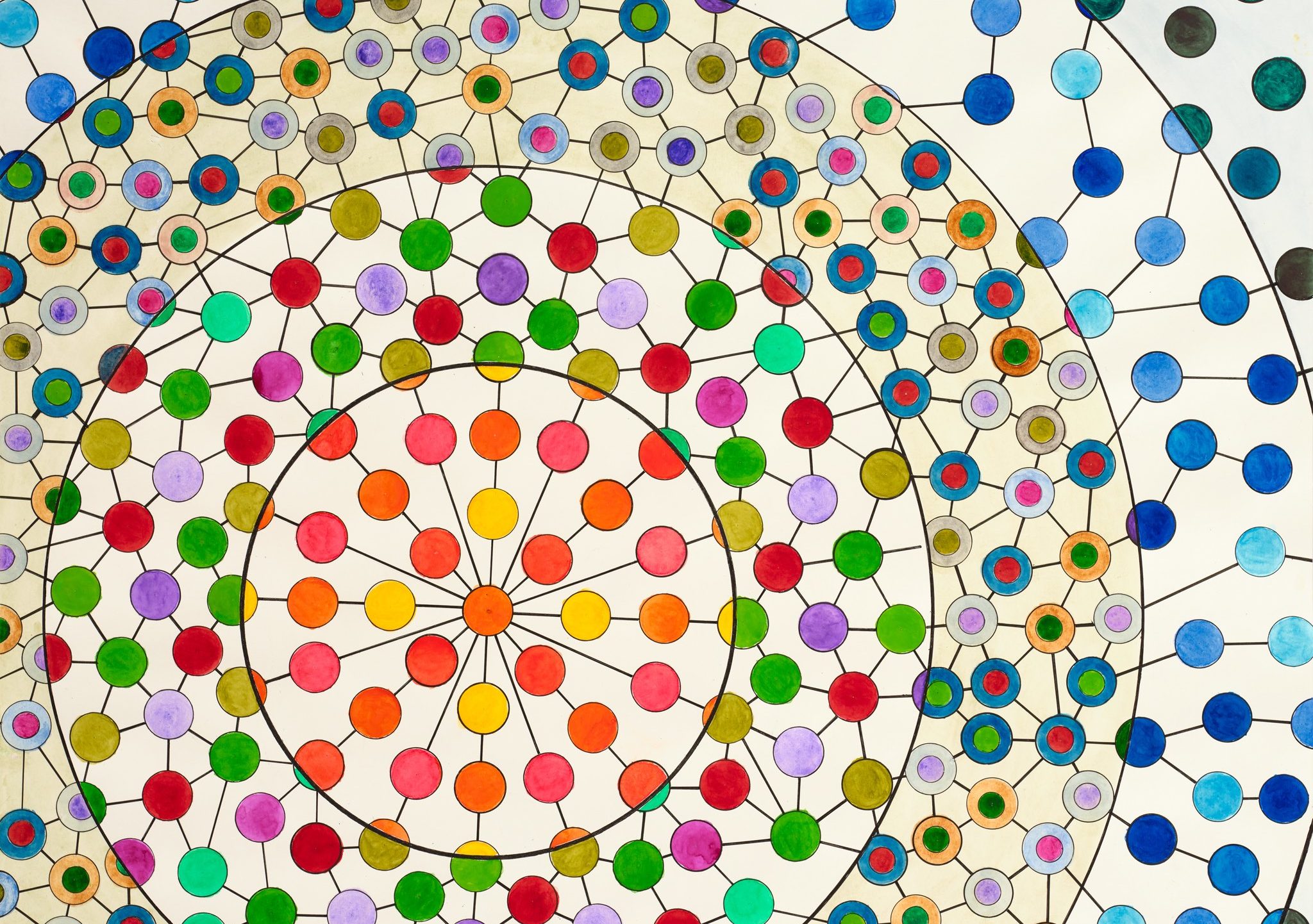
Stephen Willats: Time Tumbler
Curated with Jelena Kristic
Exhibition 22 November 2023–13 January 2024
Tuesday–Saturday: 10am–6pm
16 Wharf Road, London N1 7RW
Victoria Miro is delighted to present an exhibition by pioneering British conceptual artist Stephen Willats on the occasion of his eightieth birthday.
Bringing together new works and seminal examples from the 1970s, Time Tumbler, curated with Jelena Kristic, charts developments in the artist’s singular language, reveals the constancy of his vision and celebrates his long-standing relationship with the gallery.
For six decades, Stephen Willats has concentrated on ideas that today are ever-present in contemporary art – participation, communication, social interaction, active spectatorship and self-organisation. He has drawn on sciences such as cybernetics, advertising, artificial intelligence and behavioral theory to develop a multi-media practice grounded in the idea of the artwork as a dynamic, multichannel and social process in time and place, based on the lived experiences of people outside of a traditional art context. Rather than presenting icons of certainty, he creates an environment that stimulates viewers to engage in their own creative process, redefining the relationship between artist and audience, and the social function and agency of art.
In celebration of Willats’ eightieth birthday and his long-standing collaboration with the gallery, this exhibition gathers wall works from the 1970s and juxtaposes them with recent works made in the past five years.
The exhibition is accompanied by a publication featuring new writing on the artist by Bronac Ferran, John Kelsey, Jelena Kristic and Stephanie Willats.
Time Tumbler
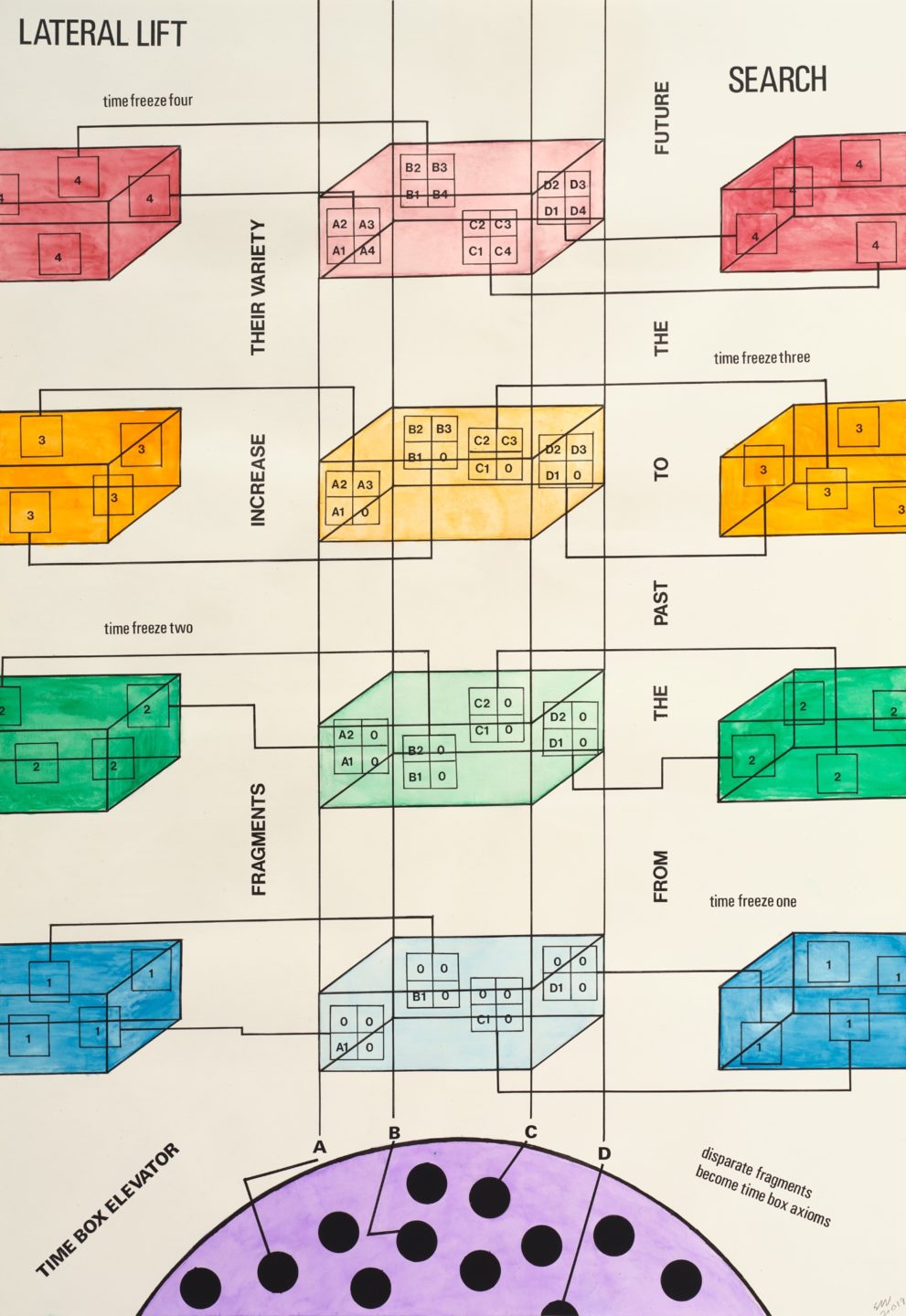
Watercolour, ink, Letraset text on paper
98.5 x 68 cm
38 3/4 x 26 3/4 in
Stephen Willats, Time Box Elevator, 2019
More info‘The “time tumbler” is Willats’s newest model of his longstanding inquiry into how we can reorder our perception of reality to make self-determined decisions.’ — Jelena Kristic
The ‘time tumbler’ is Willats’s newest model of his longstanding inquiry into how we can reorder our perception of reality to make self-determined decisions. Seeing how the meanings and functions of artifacts changed through historical periods during a consulting project at the British Museum in 2020, Willats came to understand time as relative: ‘There is no time; what we call time is movement.’ The Time Tumbler diagram drawings (2019–present) present speculative models for framing certain fragments of our reality – ideas, objects, anything perceived by the senses – within a ‘time box’ and moving them, perceptually, through different temporal contexts to reconstitute their meanings. – Jelena Kristic
PASSING THROUGH THE TIME TUMBLER/RE-MIXING THE FRAGMENTS
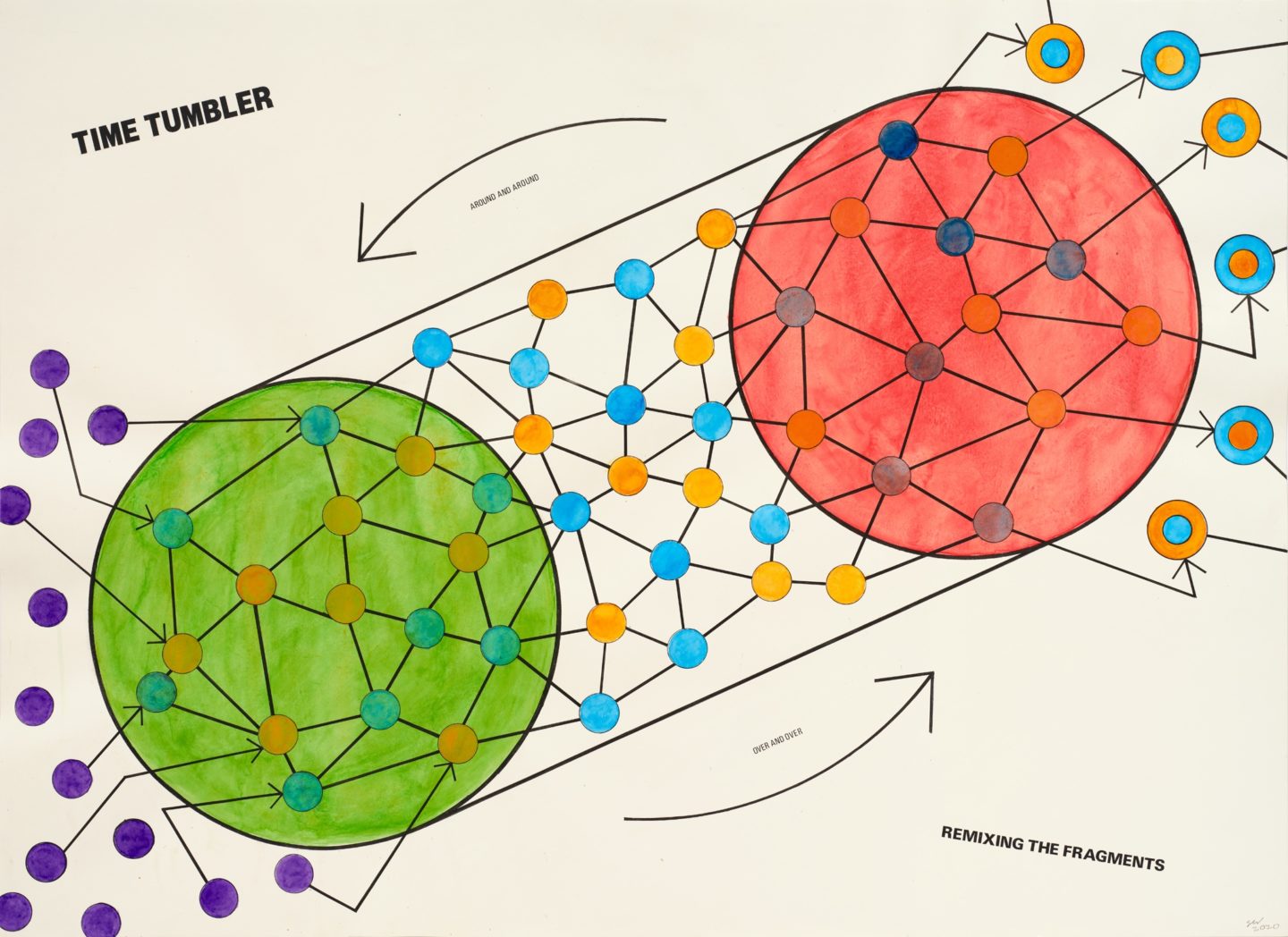
Watercolour, ink, Letraset text on paper
80 x 110 cm
31 1/2 x 43 1/4 in
Stephen Willats, Re-mixing the Fragments, 2020
More info
Watercolour, ink, pencil, Letraset text on paper
78 x 122.5 cm
30 3/4 x 48 1/4 in
Stephen Willats, Passing Through the Time Tumbler, 2022
More info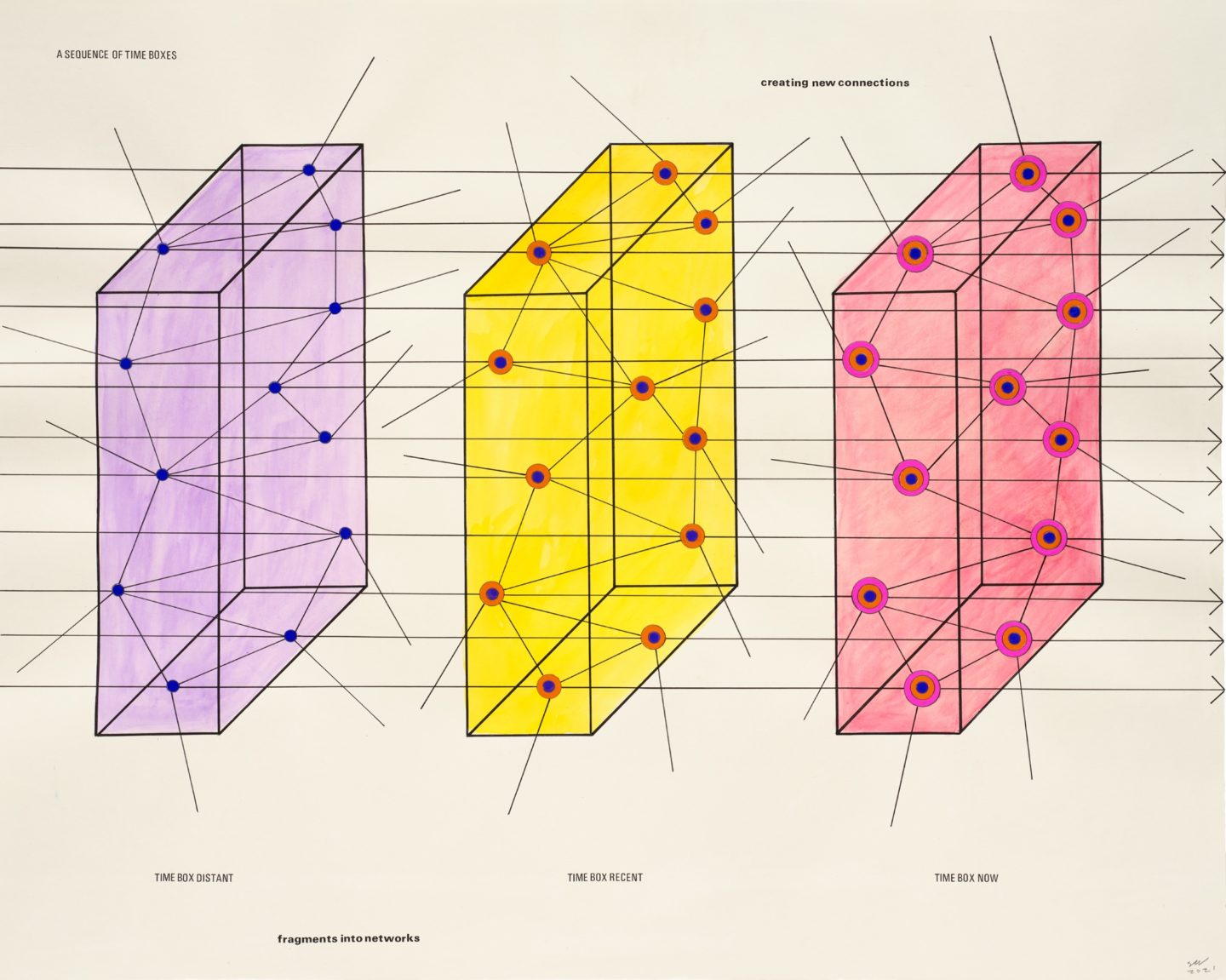
Watercolour, ink, gouache, pencil, Letraset text on paper
80 x 99.7 cm
31 1/2 x 39 1/4 in
Stephen Willats, A Sequence of Time Boxes, 2021
More info‘In our planned, clockwork world, we are all stuck inside time boxes which organise these fragments in a particular way, composing a normalised image of the present. But, at the same time, we are all potential time tumblers.’ — John Kelsey
The time tumbler is itself an unknown object and a speculative means of slotting new variables into lived reality. Although Willats’s British Museum project was ultimately never realised, and his time machine has not yet seen the light of day, an intriguing series of drawings emerged from these conversations. In diagrammatic works such as Passing Through the Time Tumbler and Re-mixing the Fragments, the time tumbler represents a function that triggers subjective and collective deviations from the dictates of linear time, scrambling and reordering the chaos of fragments that compose everyday experience. In our planned, clockwork world, we are all stuck inside time boxes which organise these fragments in a particular way, composing a normalised image of the present. But, at the same time, we are all potential time tumblers. – John Kelsey
TRAVELLING WITH THE GOOD CONNECTOR
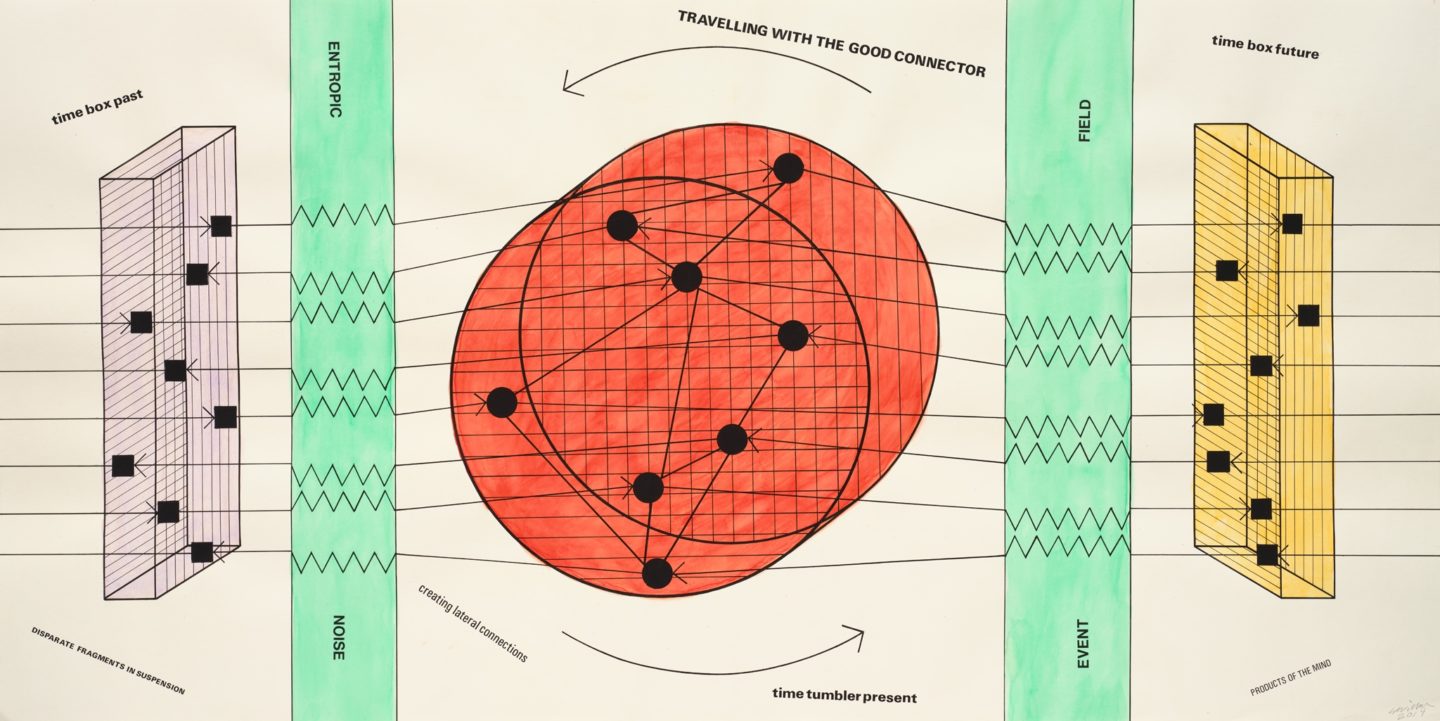
Watercolour, ink, Letraset text on paper
69 x 137 cm
27 1/8 x 54 in
Stephen Willats, Travelling with the Good Connector, 2019
More infoSocial life now enjoys new connective speeds, but mostly along preset tracks, within increasingly predictive models. The technocrats in charge of our digital infrastructure would seem to return us to an abstract, invisible version of the tower block: platforms and stacks. So, where will we find the network’s new wastelands? In Travelling with the Good Connector, Willats devotes his speculative energies to modelling the network’s potential to move us in the direction of complexity and transformation, toward a society of time travellers and omni-directional nomads. – John Kelsey
Omni Directional Search Engine Drawings

Watercolour and ink on paper
90 x 99.8 cm
35 3/8 x 39 1/4 in
Stephen Willats, Omni Directional Search Engine Drawing No. 10, 2022
More info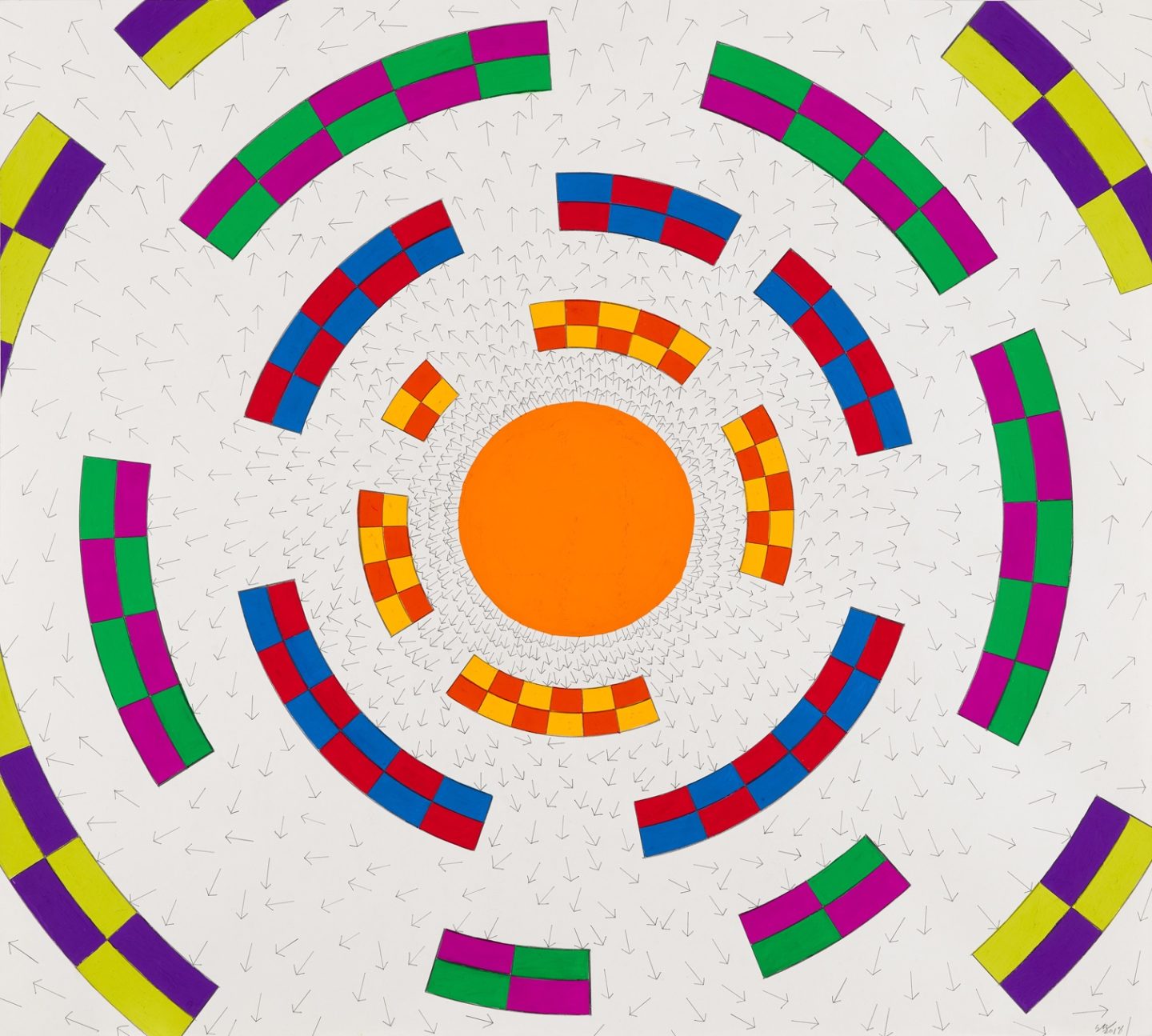
Gouache, pencil on paper
90 x 100.5 cm
35 3/8 x 39 5/8 in
Stephen Willats, Omni Directional Search Engine Drawing No. 5, 2018
More info
Watercolour, pencil, and ink on paper
100 x 100 cm
39 3/8 x 39 3/8 in
Stephen Willats, Omni Directional Search Engine Drawing No. 9, 2020
More info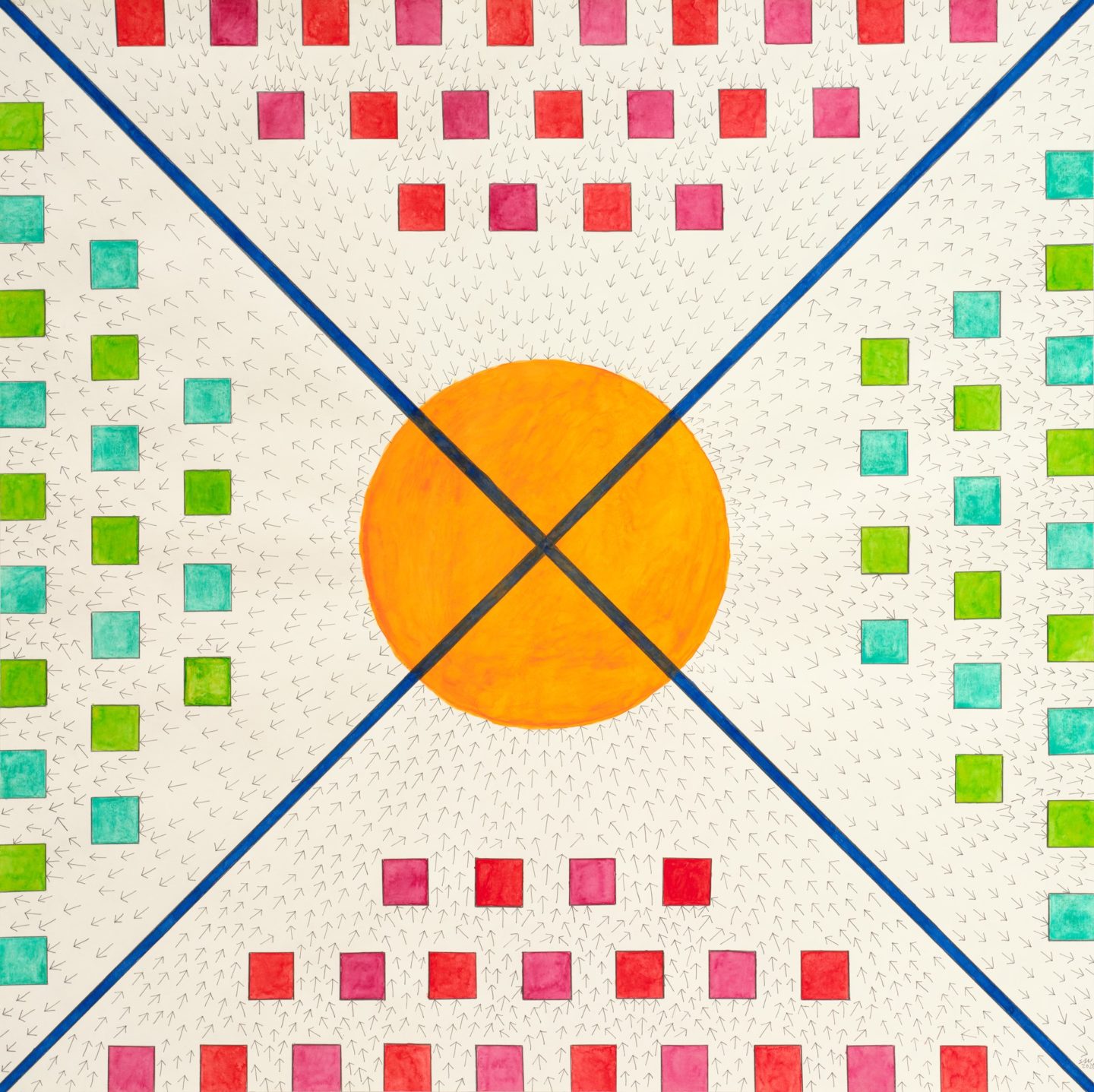
Watercolour and pencil on paper
94 x 94 cm
37 x 37 in
Stephen Willats, Omni Directional Search Engine Drawing No. 7, 2020
More info‘The Omni Directional Search Engine Drawings revisit Willats’ early-1960s interest in “omni-directional thought” while deploying an extreme degree of abstraction reminiscent of his very earliest works.’ — John Kelsey
The Omni Directional Search Engine Drawings revisit Willats’ early-1960s interest in ‘omni-directional thought’ while deploying an extreme degree of abstraction reminiscent of his very earliest works. There is no other content in these drawings beyond colour, shape and line. The series also seems to depart from the linear sequences of Willats’ multi-channel data streams and the step-function logic of previous works. These new models have a more New-Age look, organised around a dominant circular form. Like a planet or a sun, the ‘engine’ emits concentric, vibrational pulses from a central energetic ground zero. Here, Willats models a ‘search’ that radiates outwards in all directions at once. – John Kelsey
‘This omni-directionality and sense of the infinite is reflected in the brightly coloured palette of these diagrams, which often include the entire colour spectrum in a single drawing.’ — Jelena Kristic
The omni-directional thought that was central to developing counter-consciousness in Willats’s 1970s wall works takes on a new dimension. Instead of a sequential or linear view of time – with discrete past, present and future – the time tumbler is a nonlinear process. This omni-directionality and sense of the infinite is reflected in the brightly coloured palette of these diagrams, which often include the entire colour spectrum in a single drawing. – Jelena Kristic
A Portrait of a Society in Transit, Material Things
Language Islands
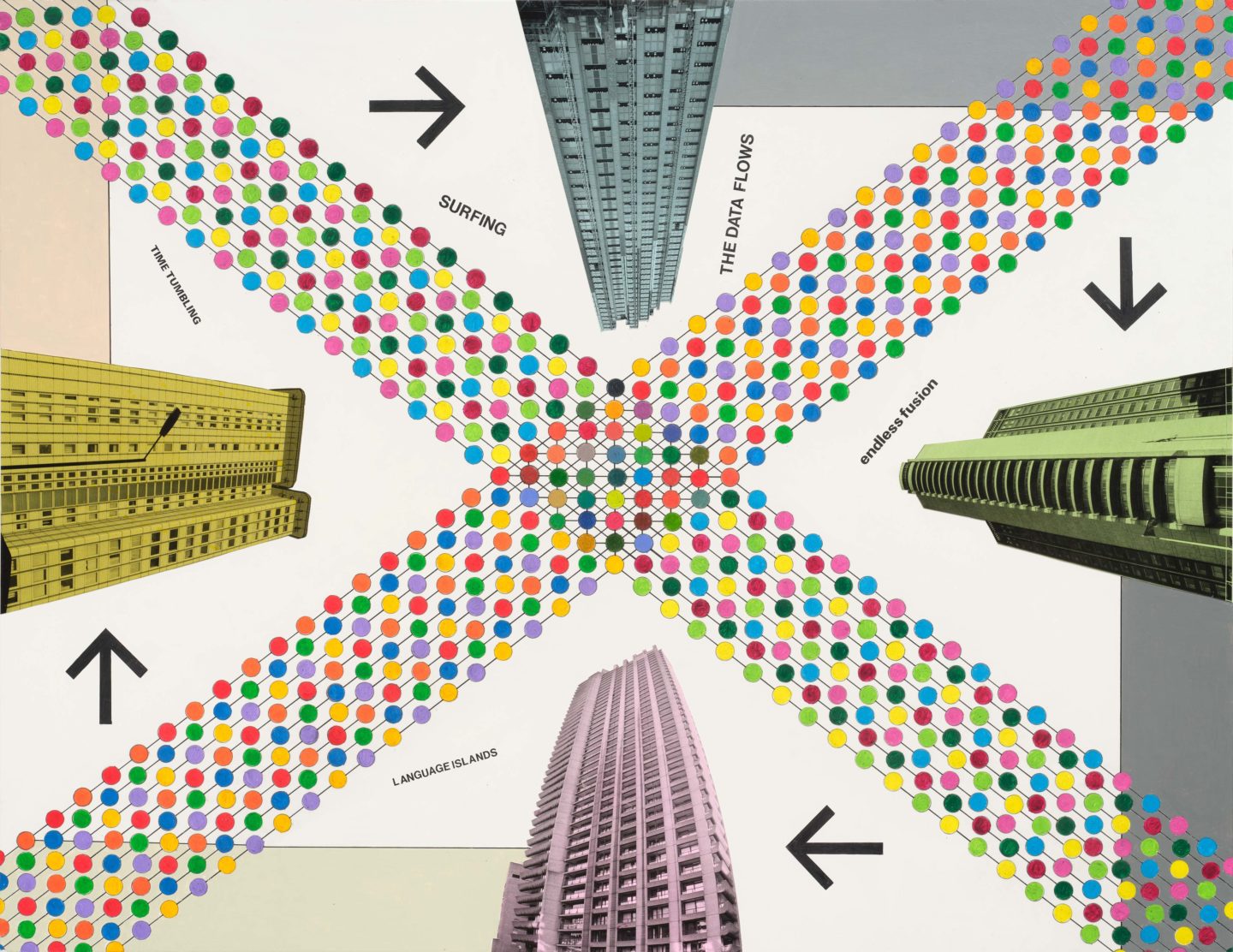
Photographic prints, photographic dye, acrylic paint, ink, pencil on card
81.5 x 105 cm
32 1/8 x 41 3/8 in
Stephen Willats, Language Islands, 2021
More info‘Images of monolithic city architecture form a schematic backdrop to the abstract network, like an archaeological layer representing a time when social life was still contained by brute urban planning.’ — John Kelsey
In single-panel works such as Language Islands and At the Crossroads, Willats exchanges the sun-like circle of the Omni Directional Search Engine Drawings for a big X of crossed data streams. Circularity is not missing in these models, however: clockwise and counterclockwise movements are indicated by arrows floating outside the diagram’s central X. Each ‘crossroads’ is composed of many flowing and interconnected coloured dots… – John Kelsey
At The Crossroads
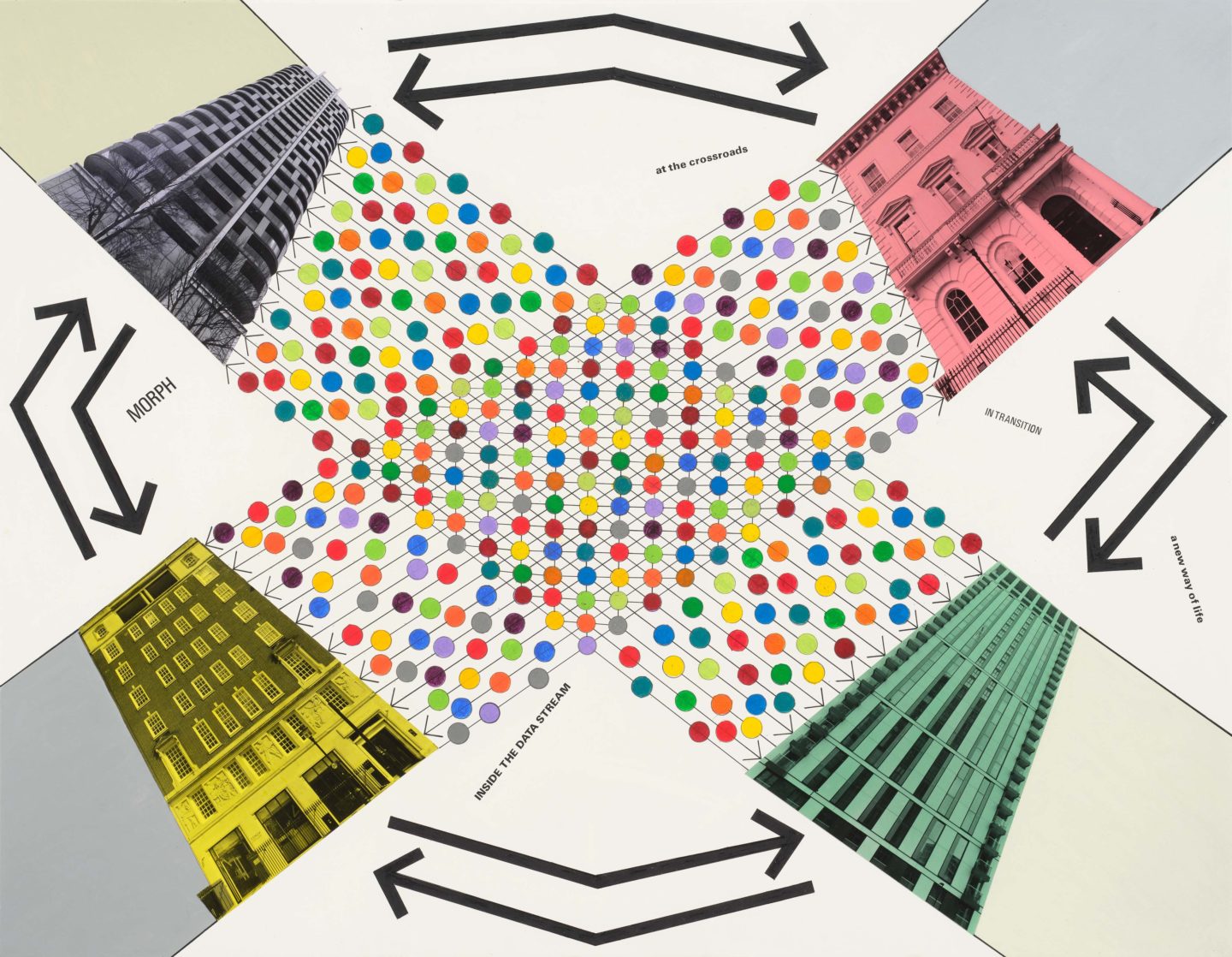
Photographic prints, photographic dye, acrylic paint, ink, Letraset text on card
81.5 x 105 cm
32 1/8 x 41 3/8 in
Stephen Willats, At the Crossroads, 2021
More infoThe Reconnection
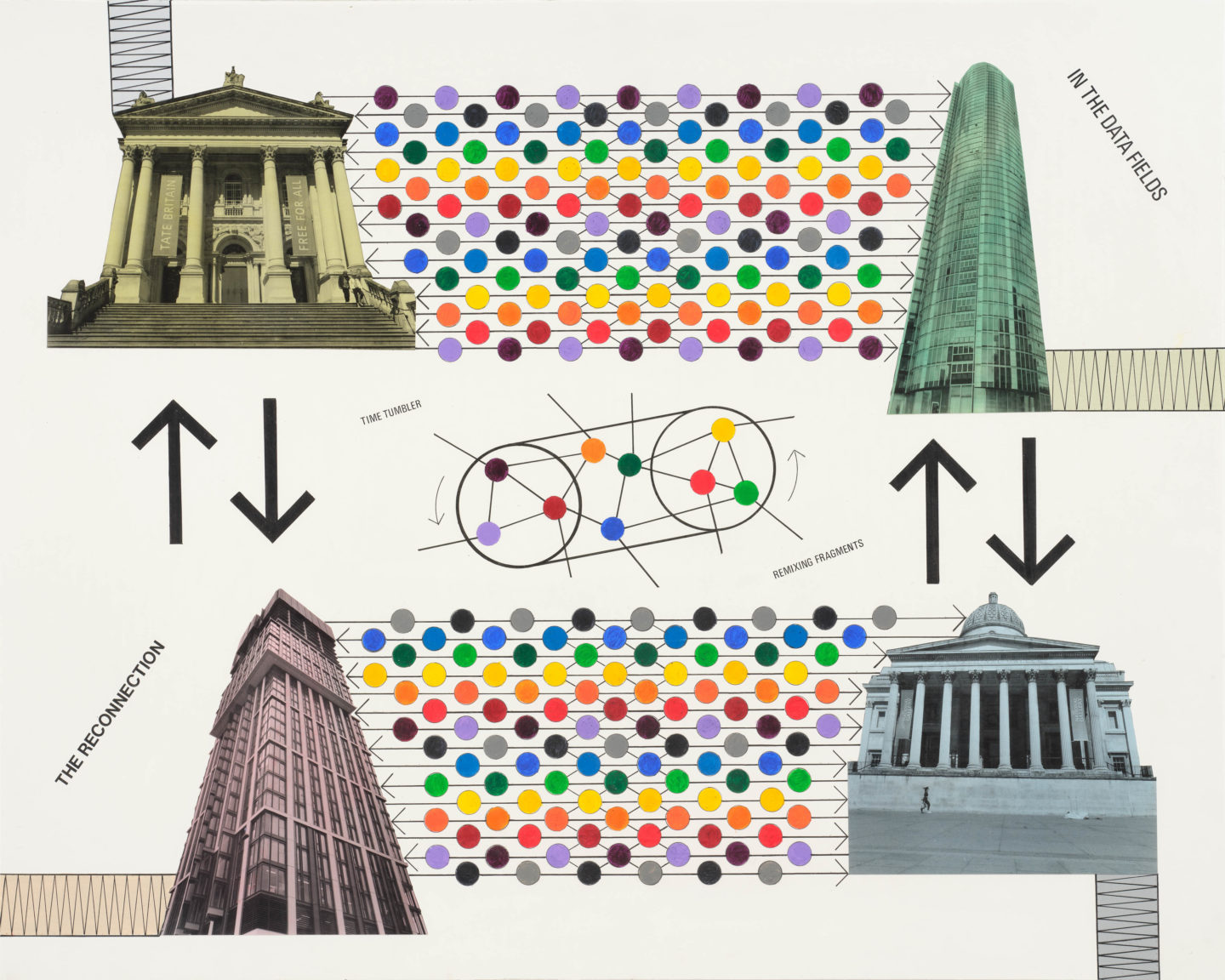
Photographic prints, photographic dye, poster paint, acrylic paint, ink, Letraset text on card
81.3 x 101.7 cm
32 x 40 in
Stephen Willats, The Reconnection, 2021
More infoBut, in another drawing from the same year, The Reconnection, instead of forming a crossroads, the two data streams run parallel to each other, with a time tumbler positioned between the isolated flows… Wherever movement within the model becomes available to the time tumbler’s sway, we see connectivity as it ‘could be’. Images of monolithic city architecture, meanwhile, form a schematic backdrop to the abstract network, like an archaeological layer representing a time when social life was still contained by brute urban planning… – John Kelsey
The Path In Front and The Shadow Behind
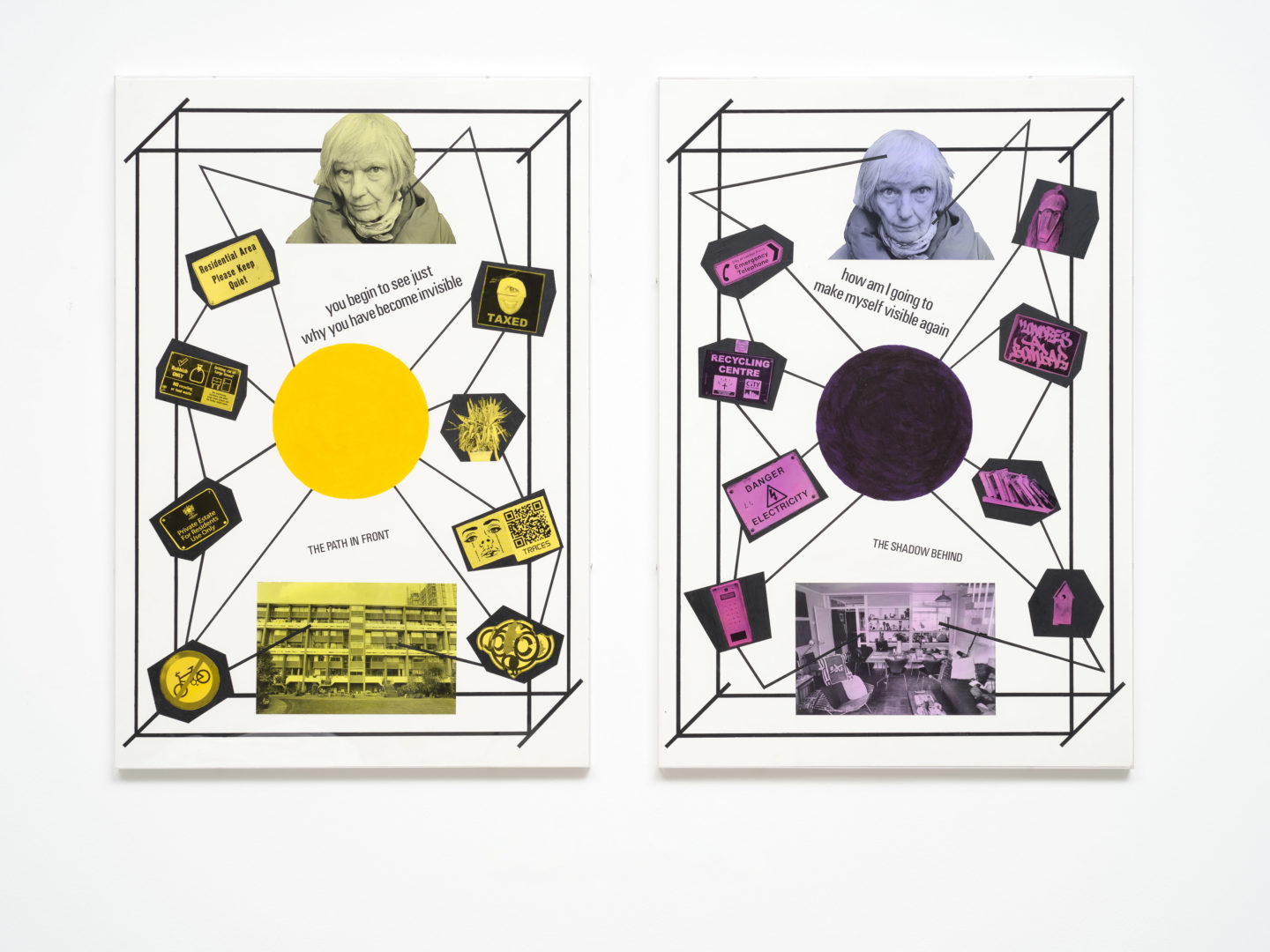
Photographic prints, photographic dye, acrylic paint, Letraset text on card
Framed with perspex
Two panels, each panel
105 x 72 cm
41.3 x 28.3 in
Stephen Willats, The Path In Front and The Shadow Behind, 2022
More info‘Capturing this notion of diminishing agency, whilst at same time heightening the visibility of his subject… Willats has produced an early 21st-century masterpiece that cuts into time like a razorblade and leaves us stinging.’ — Bronac Ferran
In seeing the instantly iconic The Path In Front and The Shadow Behind… we observe Willats deploying a sense of empathy at a level that takes his art into new territory. Brilliantly achieved and haunting, the work documents the condition of being an older person who is feeling daily more invisible… Capturing this notion of diminishing agency, whilst at same time heightening the visibility of his subject… Willats seems to me to have produced an early 21st-century masterpiece that cuts into time like a razorblade and leaves us stinging.
A similar approach was adopted by Willats to realise Inside The Time Box. Situated across two panels linked by a critical arrow, the work addresses themes of migration, cultural identity, food and refuge. Here, the primary protagonist is again a woman who is shown looking directly at us. Willats counterpoints past and present: from her migration from Sardinia to Britain, where she became a key force of activist support within a community living in Somers Town, a neighbourhood of predominantly social housing situated between between three mainline railways. – Bronac Ferran
Inside The Time Box
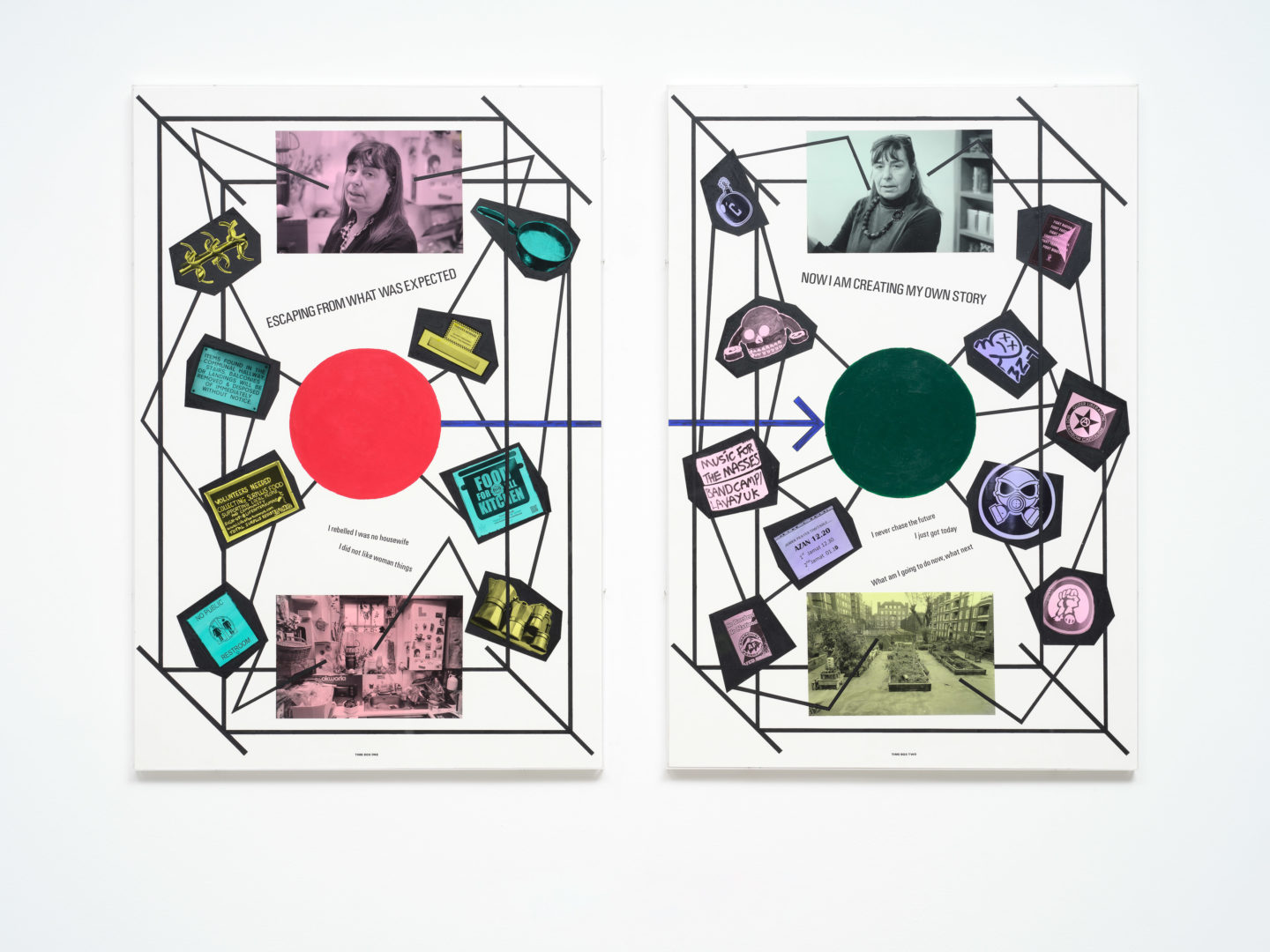
Photographic prints, photographic dye, acrylic paint, Letraset text on card
Framed with perspex
Two panels, each panel
108 x 74 cm
42 1/2 x 29 1/8 in
Stephen Willats, Inside The Time Box, 2023
More info‘These works can be seen as cybernetic portraits in time. Taking the form of two-panel diptychs, each depicts interconnected fragments of experience and personal reflections within loosely composed “concept frames” or time boxes.’ — John Kelsey
Selected works 1974–1980
‘The point of his models is to find new ways of perceiving urban space-time, to get involved in its social construction.’ — John Kelsey
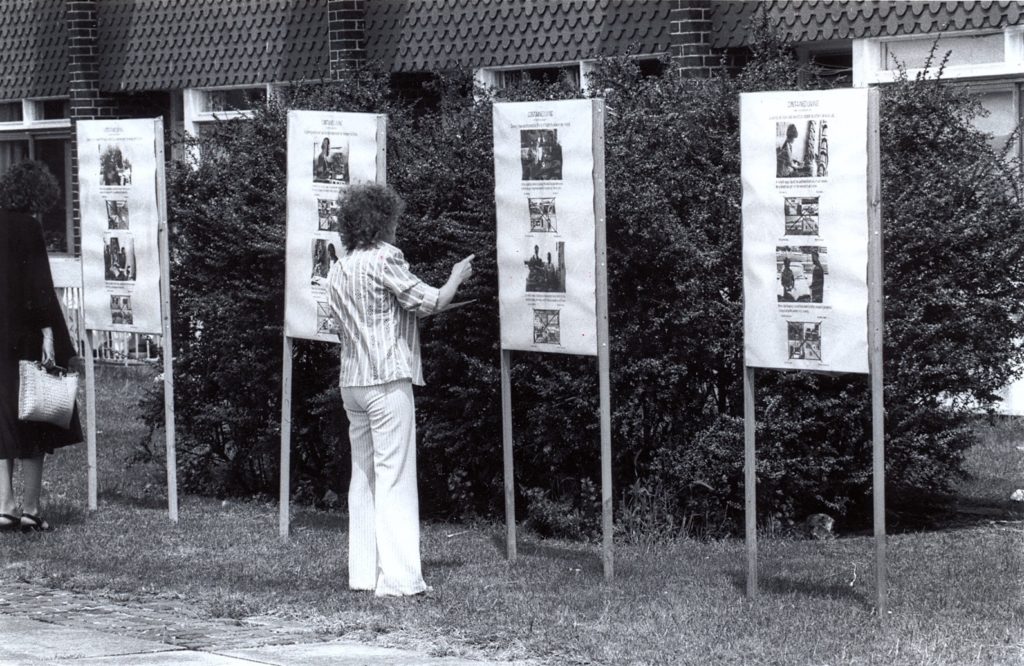
The wall works of the 1970s manifest an idiosyncratic amalgam of the austere aesthetics and logic of the administrative state, advertising design, and scientific research of the time to become a vehicle for imagination and insight that enables self-determination and nonconformist thinking. The wall works’ forms communicate with viewers in a behavioural and perceptual manner; they are not only their conceptual content or a translation of their references… The formal investigation of the cognitive and physical journey between outside and inside, as well as the related theme of transformation through movement, is foundational to the works Willats creates today which model time as a perceptual, reconfigurable construct. – Jelena Kristic
Since the 1960s, Willats has applied cybernetic thinking about self-organising systems and informational feedback loops to the observation of specific social contexts, in London and beyond. Such concepts remain useful for understanding how complex social worlds are constructed and can also model unpredictable changes affecting the fabric of consensual reality.
In his works from the 1970s…, for example, Willats observed how the lives of low-income citizens residing in London’s tower-block estates were suddenly altered by punk. Beyond the top-down planning of the tower block and outside its concrete walls, unplanned urban wastelands opened onto other, wilder ways for young people to move and exist together. Meanwhile, the introduction of photocopying and affordable recording technologies triggered a new, resistant and DIY subculture, entirely self-organised in opposition to the rational dictates of urban planners.
Working in collaboration with residents of housing estates, Willats constructed diagrams or simulations which visualised such changes using the language of systems theory. Via abstract modelling languages borrowed from second-order cybernetics, an existential ‘journey’ or change of state could be mapped and recoded, communicated and thereby put to use by others… The point of his models is to find new ways of perceiving urban space-time, to get involved in its social construction. – John Kelsey
A Moment of Action
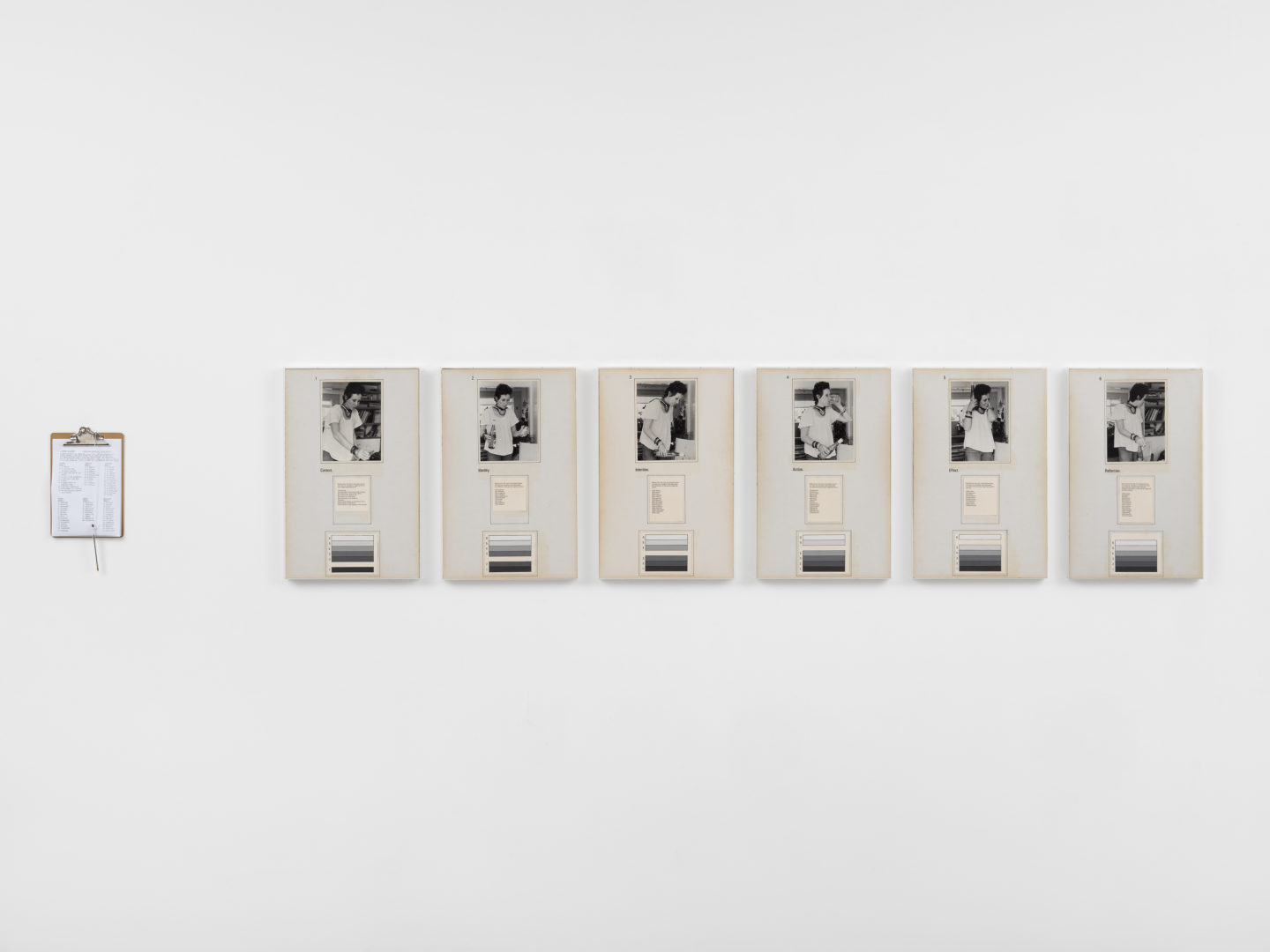
Photographic prints, gouache, ink, typed text, Letraset on card
Framed with perspex
Six panels, each panel
64.5 x 41.3 x 3.5 cm
25 3/8 x 16 1/4 x 1 3/8 in
Stephen Willats, A Moment of Action, 1974
More info‘A Moment of Action presents across six small panels a woman engaged in pouring and consuming a drink… viewers are asked to select words or phrases which they feel best describe the situation.’ — Jelena Kristic
A Moment of Action presents across six small panels a woman engaged in pouring and consuming a drink. This everyday activity seems to be taking place in a domestic space and, possibly, in the company of others. Each numbered panel contains a black-and-white photograph and a Letraset label: ‘Context’, ‘Identity’, ‘Intention’, ‘Action’, ‘Effect’, ‘Reflection’. Underneath these labels, viewers are asked to select the words or phrases from a ‘list of variables’ which they feel best describe the situation. – Jelena Kristic
Six Levels of Interpersonal Organisation
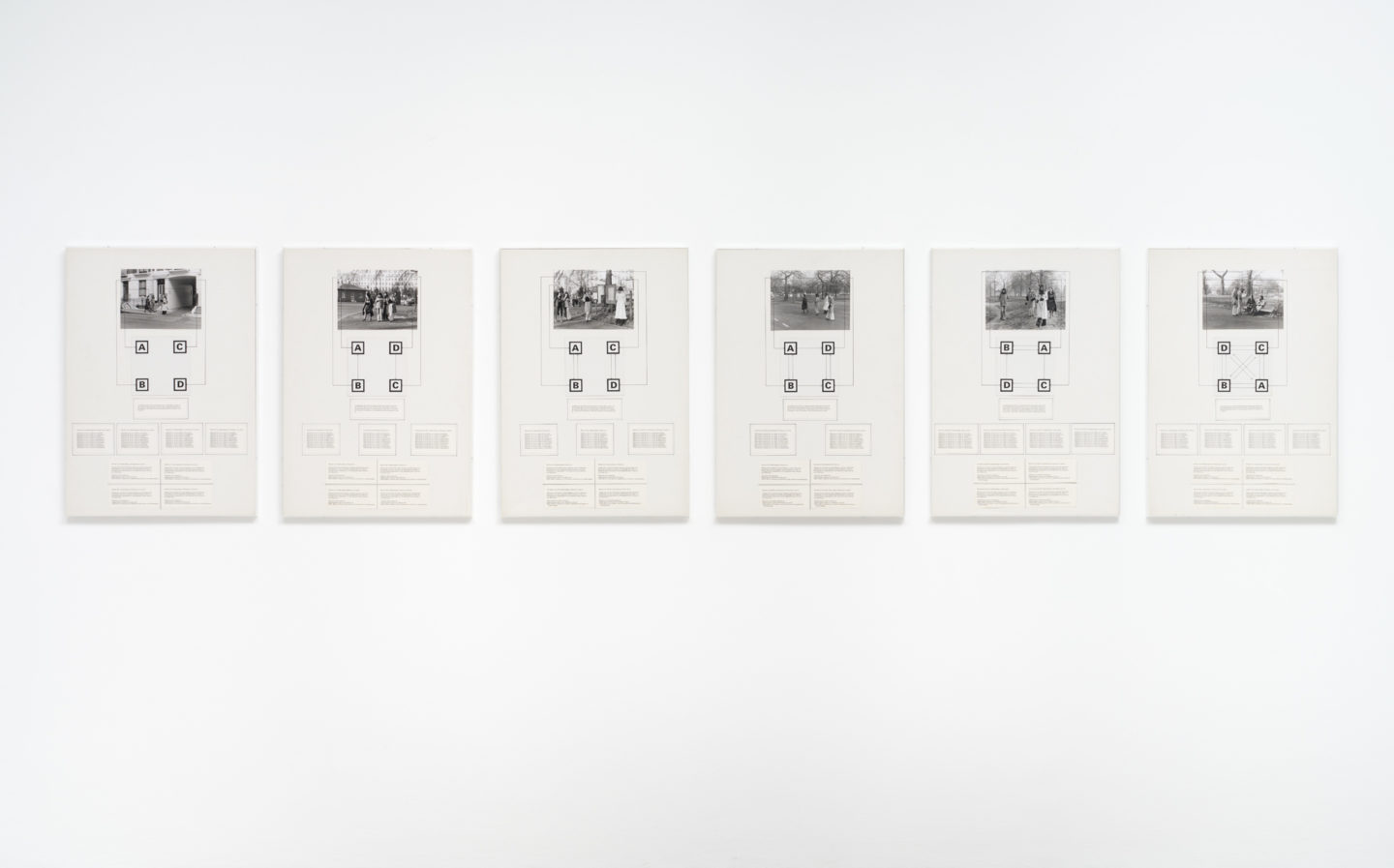
Photographs, gouache, text, ink, Letraset on card
Framed with perspex
Six panels, each panel
76.2 x 50.8 cm
30 x 20 in
Stephen Willats, Six Levels of Interpersonal Organisation, 1974
More info‘Six panels, featuring six photographs of a group walking through London’s streets and parks, ask viewers to describe each person’s relationship to the other.’ — Jelena Kristic
Six Levels of Interpersonal Organisation was the first wall work to incorporate the symbology of the cybernetic homeostat square, with A, B, C and D representing people as nodes in a system choosing between inputs and outputs. Six panels, featuring six photographs of a group walking through London’s streets and parks, asked viewers to describe each person’s relationship to the other. Based on this, they would then pose open-ended questions about each person’s intentions and actions, and how these might affect the relationships pictured… The wall work stimulated real behavioural effects, taking the viewer on a cognitive and physical journey. – Jelena Kristic
A State of Agreement
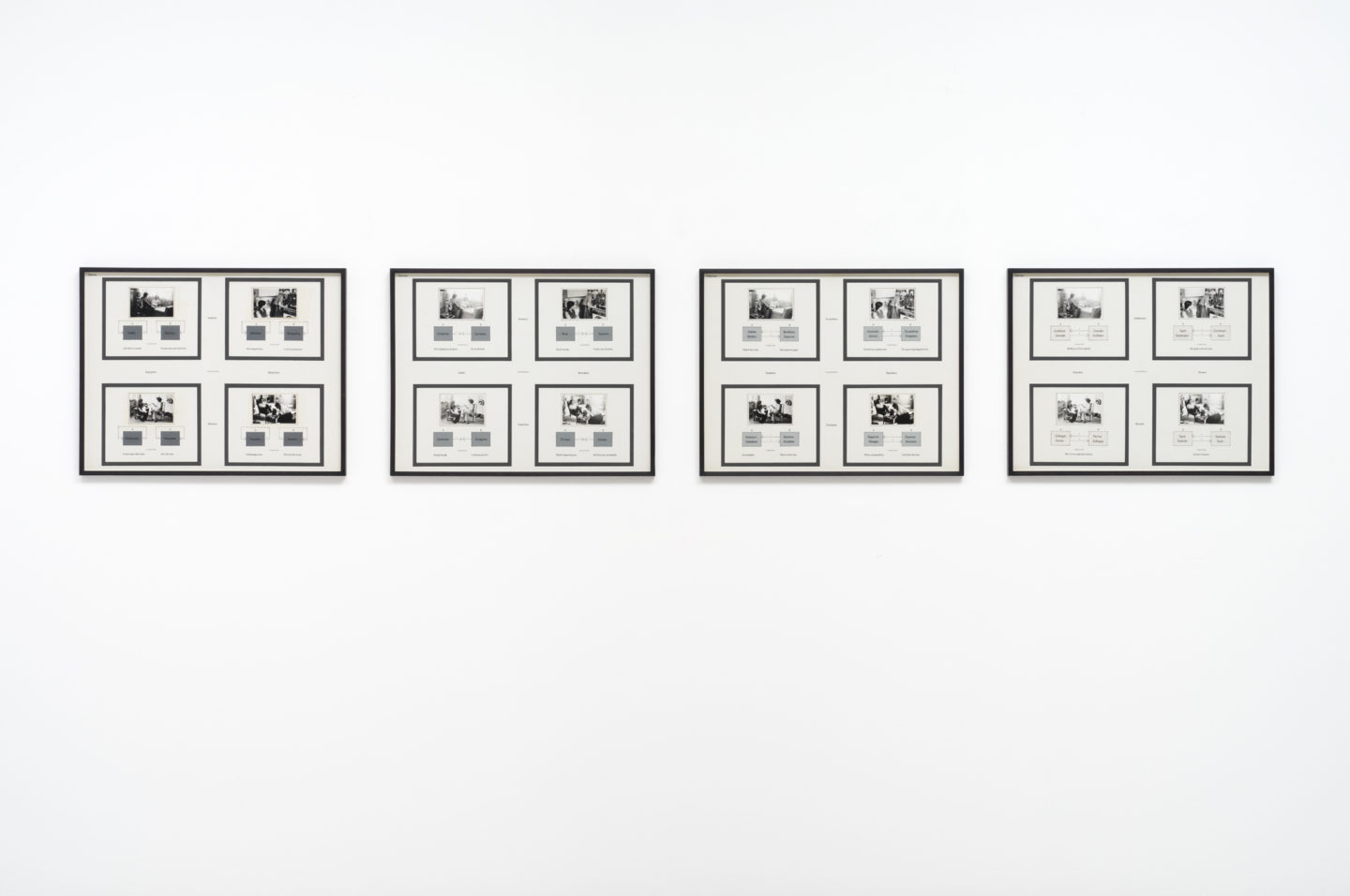
Photographic prints, gouache, ink, Letraset text on card
Framed in glass and wood
Four panels, each panel
54.5 x 70 cm
21 1/2 x 27 1/2 in
Stephen Willats, A State of Agreement, 1975
More infoModelling individual choice became a principal theme in Willats’s practice, represented by the wall work A State of Agreement. The Ashby homeostat’s quartile format informs the wall work, with each of the four panels showing ‘a state of behaviour’ and containing four smaller rectangles representing four states of mind. Each state of mind is represented by a photograph of two people in a domestic environment, modelled with a behavioural diagram and text. The same four photographs appear in every panel but the text around the image and behavioural type varies. – Jelena Kristic
The Decision Makers

Photographic prints, gouache, ink on card
Framed with perspex
76.2 x 101.6 cm
30 x 40 in
Stephen Willats, The Decision Makers, 1976
More info‘Willats noted that conformity, the “social need to be correct”, resulted in people emulating the stereotypes they saw projected in society.’ — Jelena Kristic
The Decision Makers compares the decision-making approaches of two groups – one dependent and one autonomous… Willats made an early and key distinction in The Decision Makers by using photographs of the outside and inside of a domestic space. The dependent group relationship was illustrated with photographs of building exteriors under the heading ‘Projections from their external world’. Conversely, photographs of bookcases, kitchens and chests of drawers illustrated the autonomous group relationship under the heading ‘Images within our contextual reality’. Willats noted that conformity, the ‘social need to be correct’, resulted in people emulating the stereotypes they saw projected in society… Interior domestic spaces, on the other hand, reflected the speculative, alternative perceptual models individuals can create within a system governed by dominant conventions or stereotypes. – Jelena Kristic
I Don’t Want To Be Like Anyone Else, Trying To Forget Where We Came From, The Compartmentalised Cliff
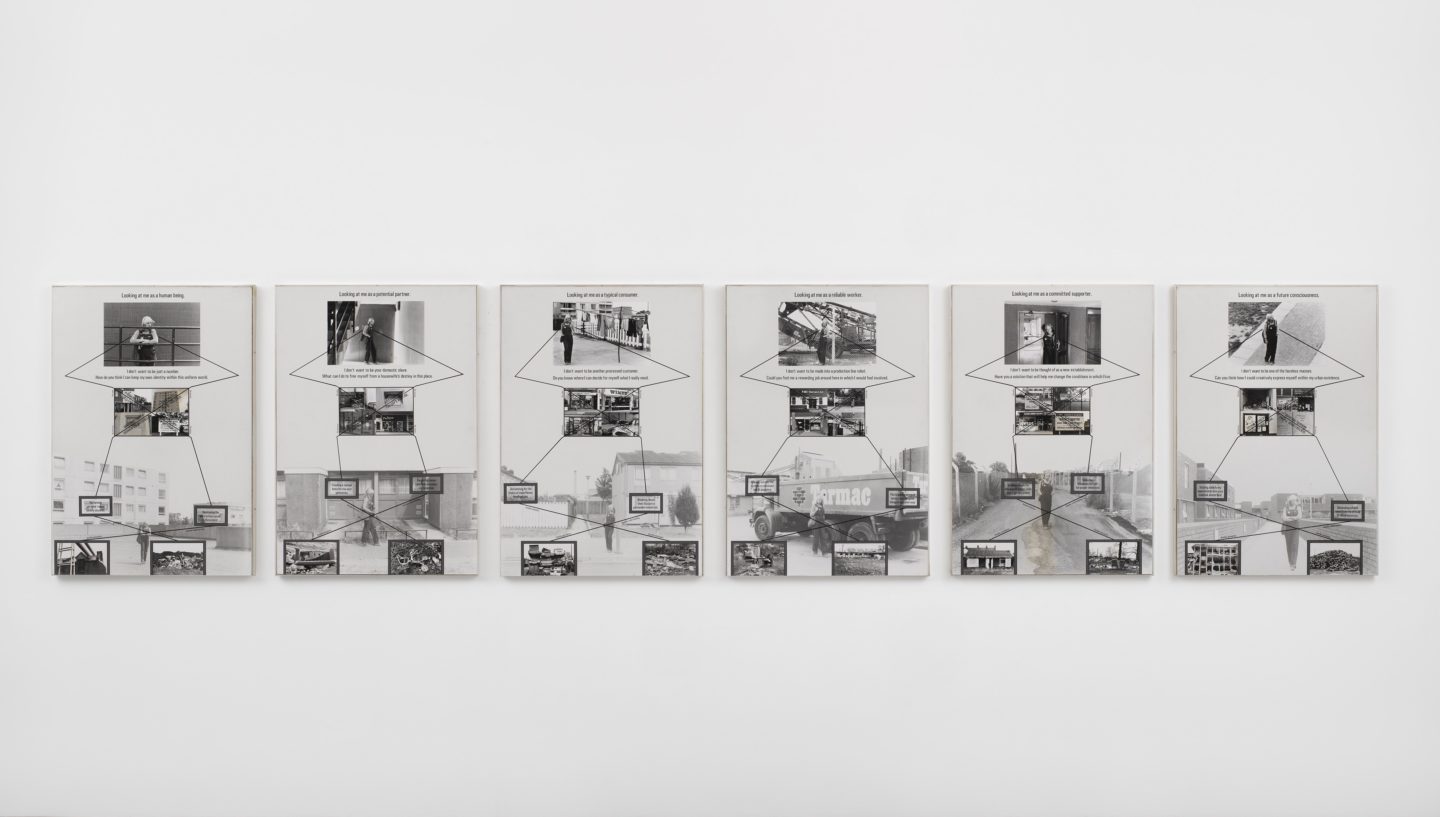
Photographic prints, gouache, ink, Letraset text on card
Framed with perspex
Six panels, each panel
109 x 76 cm
42 7/8 x 29 7/8 in
Stephen Willats, I Don’t Want To Be Like Anyone Else, 1977
More info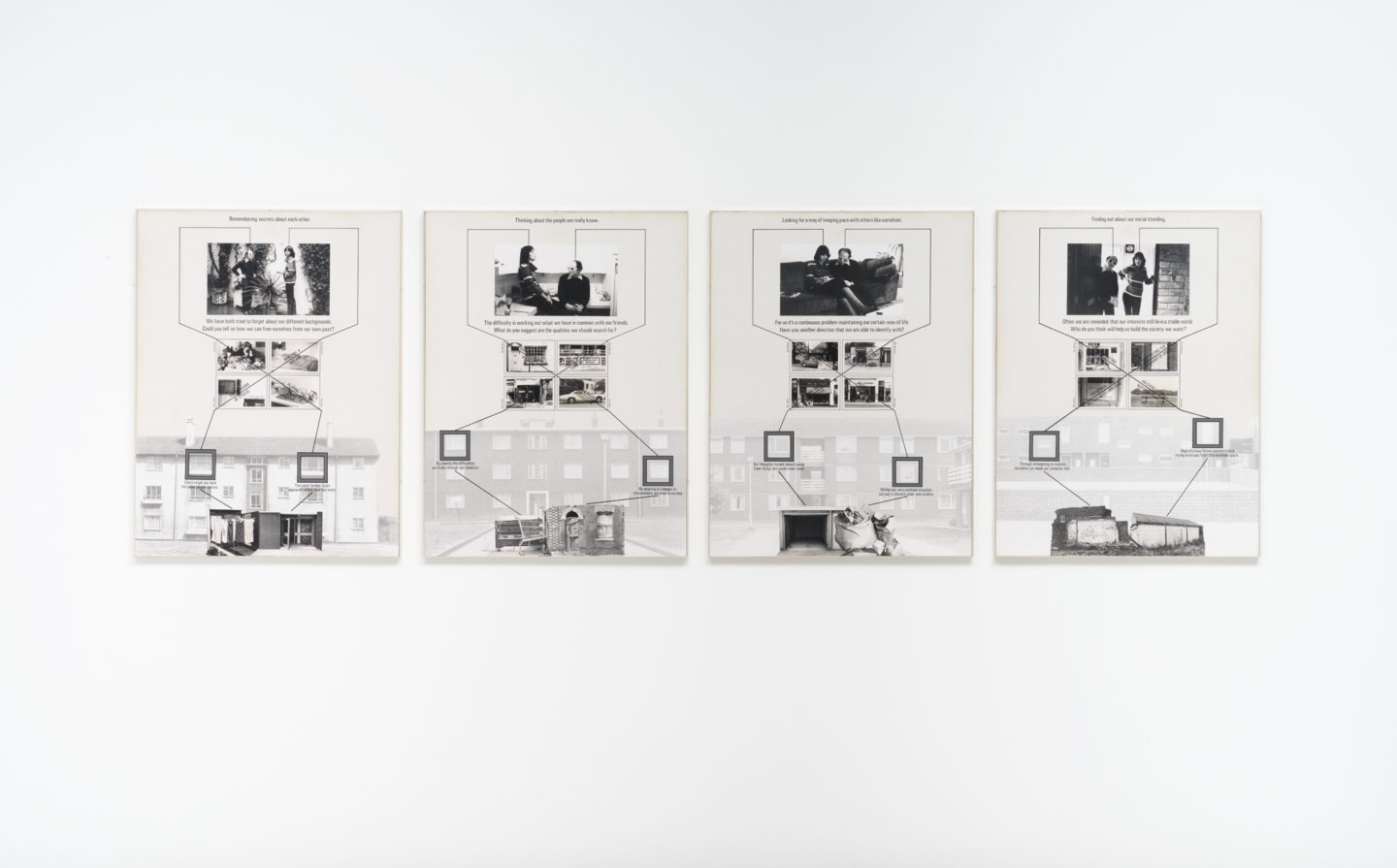
Photographic prints, Letraset text, ink on card
Framed with perspex
Four panels, each panel
103.5 x 78.7 cm
40 3/4 x 31 in
(SW 290)
Stephen Willats, Trying To Forget Where We Came From, 1977
More info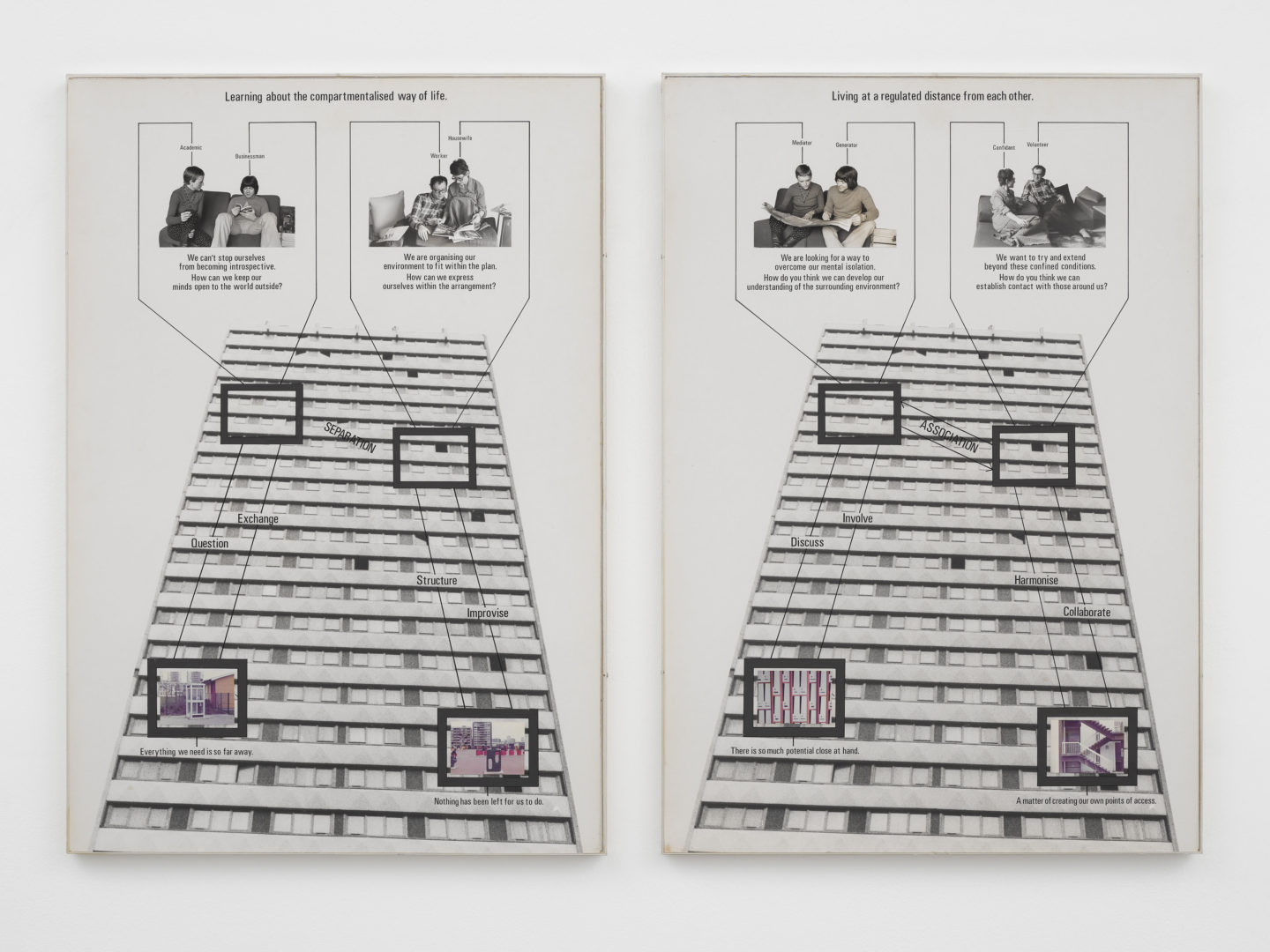
Photographic prints, ink, Letraset text on card
Framed with perspex
Two panels, each panel
110.3 x 76.3 cm
43 3/8 x 30 1/8 in
Stephen Willats, The Compartmentalised Cliff, 1977
More info‘Willats further investigated the movement between exterior and interior worlds through works that modelled the institutional structures of conformity and the individual interior world of nonconformity.’ — Jelena Kristic
Willats further investigated the movement between exterior and interior worlds through works such as The Compartmentalised Cliff, Trying To Forget Where We Came From and I Don’t Want To Be Like Anyone Else, which modelled the institutional structures of conformity and the individual interior world of nonconformity. They developed the idea of housing architecture as a functional and symbolic model of how, despite living within a system, people can both reflect the stereotypes projected by this system and assert their free will by creating a model of perception other than, or in opposition to, the dominant or authoritative consciousness determining this system. Willats refers to this model, which became a major motif in his work of the later 1970s, as ‘counter-consciousness’. – Jelena Kristic
A Conflict of Identities, Where Do I Belong
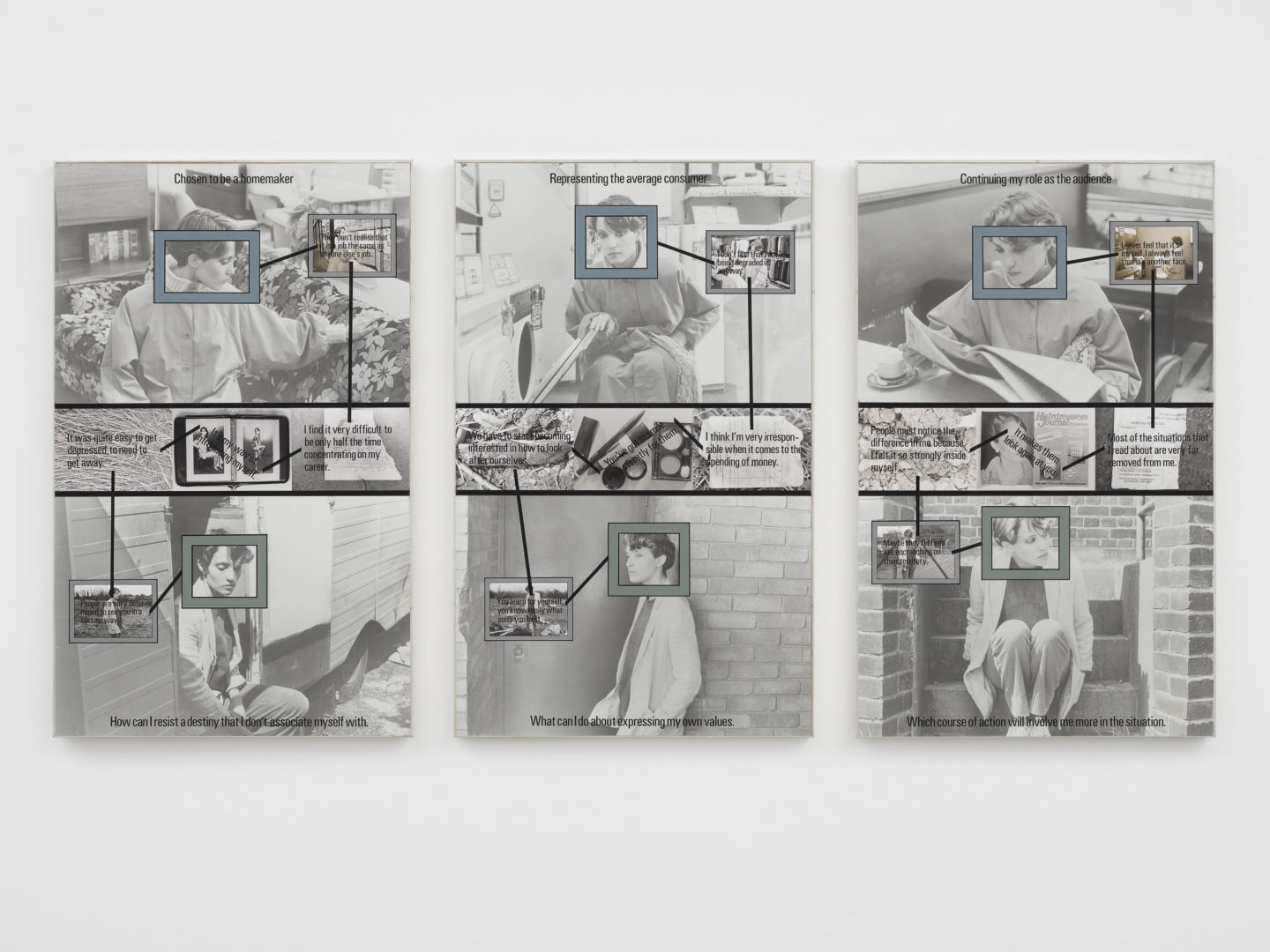
Photographic prints, photographic dye, ink, Letraset on card
Framed with perspex
Three panels, each panel
110 x 68.5 cm
43 1/4 x 27 in
Stephen Willats, A Conflict Of Identities, 1979
More info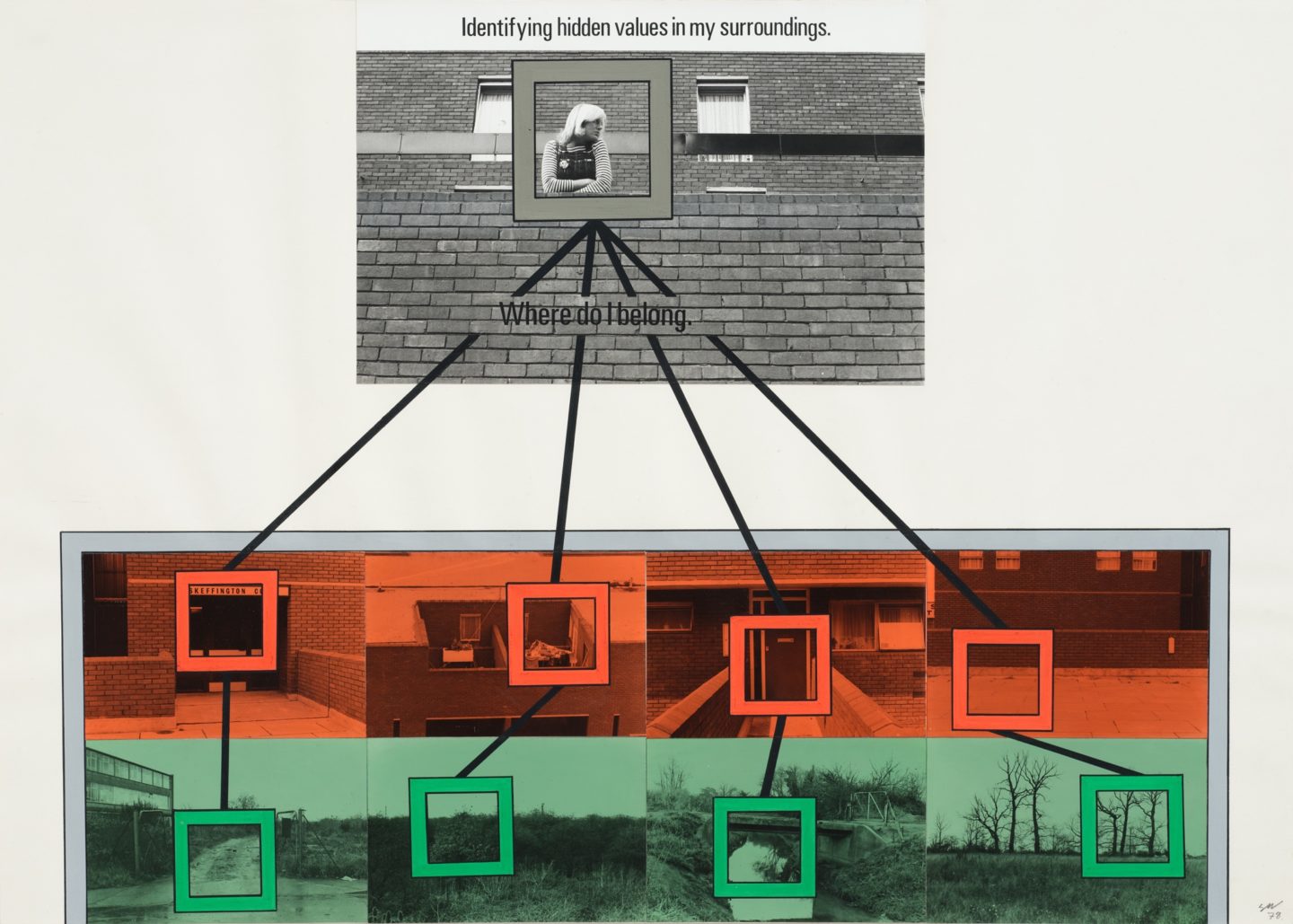
photographic prints, photographic dye, gouache, ink, Letraset text on paper
64 x 90 cm
25.22 x 35.46 in
Stephen Willats, Where Do I Belong, 1978
More infoWillats evolved his inquiry into individual decision-making and counter-consciousness by representing the transformative movement of an individual’s body and objects between symbolic and actual inside and outside environments. This movement can also be seen as representative of the viewer’s interaction with the artwork in the gallery. Where Do I Belong is emblematic of this refinement of the self-determined journey which Willats started modelling in A Moment of Action.
Willats further enacted his diagram of perceptual transformation into lived human experience using a tape recorder and camera in works such as A Conflict of Identities. Featuring a woman who aspired to become a fashion model, the outdoor photographs of the wasteland here represented the transformative environment of her aspiration and idealisation. – Jelena Kristic
Looking at it From the Inside, It’s Death Insurance Really
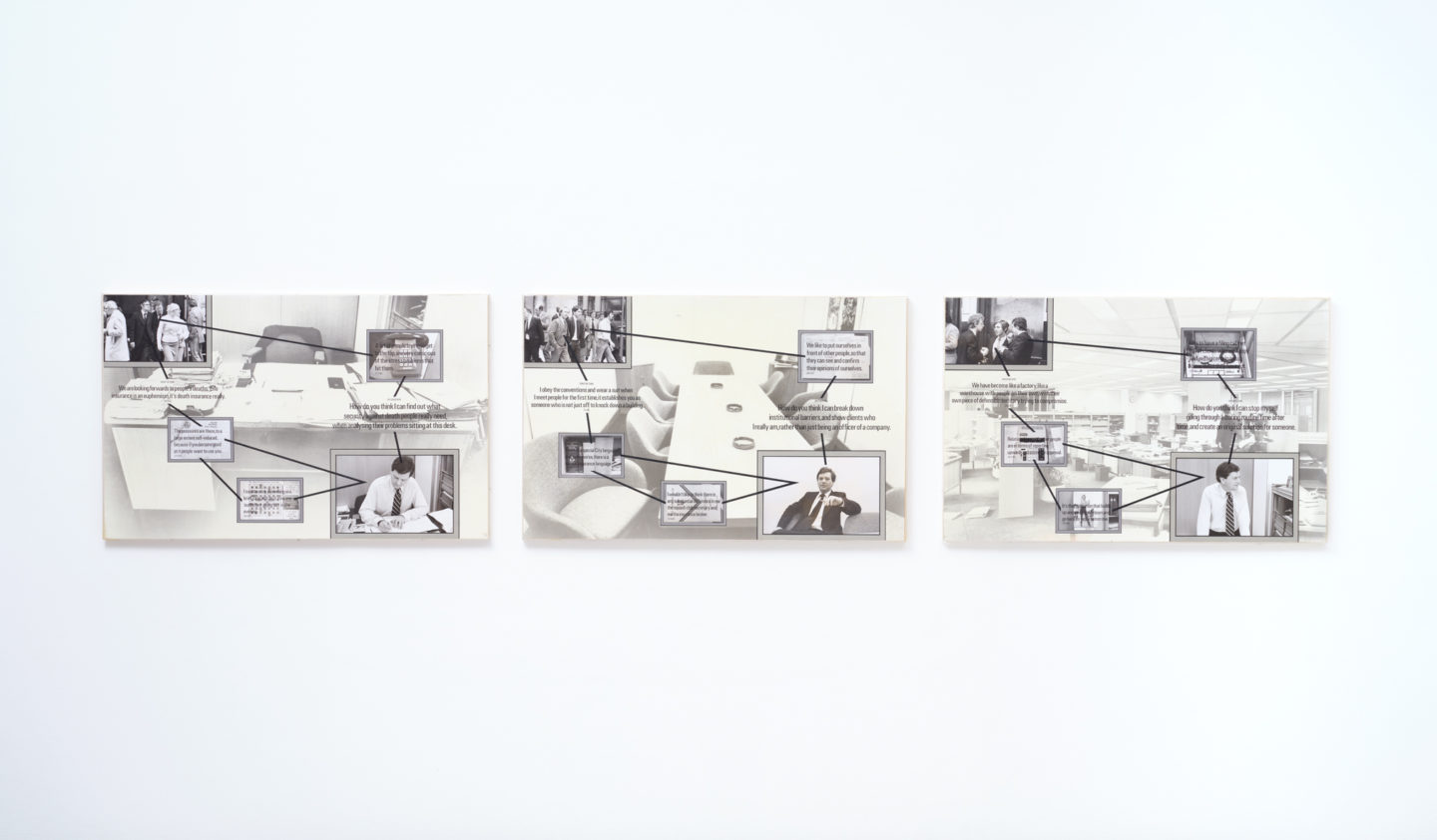
Photographic prints, photographic dye, gouache, ink, Letraset on card
Framed with perspex
Three panels, each panel
128 x 81.5 cm
50 3/8 x 32 1/8 in
Stephen Willats, Looking at it From the Inside, It’s Death Insurance Really, 1980
More info‘Willats collapses indoor and outdoor photographs of objects and architectural elements that define the world of the insurance man in a network that presents itself like a maze for the viewer to follow.’ — Jelena Kristic
The three panels in Looking at it From the Inside, It’s Death Insurance Really combined to create an immersive, almost cinematic environment. The horizontal format, the difficulty of parsing the text overlaid on the image and the scattered, circular arrangement of frames discouraged any ‘flow chart’ reading and can be seen to formally simulate the concept of ‘lateral thinking’ advanced by psychologist Edward de Bono, which was influential in business education at the time. Here, Willats collapsed indoor and outdoor photographs of objects and architectural elements that defined the world of the insurance man in a network that presents itself like a maze for the viewer to follow. Willats formally embraces de Bono’s ‘movement value’ of statements and ideas – and the zeitgeist of the corporate world in 1980 – to restructure routine patterns and generate alternative patterns from a dominant idea.
The simulations of choice and nonconformity have evolved from dialectic visual representations in A State of Agreement and I Don’t Want To Be Like Anyone Else to sprawling, erratic journeys from outside to inside and back. – Jelena Kristic
Films
‘Willats’s Super 8 road movies tap into the strange new temporalities unleashed during lockdown.’ — John Kelsey
At the start of the COVID-19 pandemic, just before the country was sent into lockdown, Willats shot a Super 8 film through the windshield of his car. He was on his way out of London, heading for the countryside. The Escape is affective in its stark simplicity, its from-the-hip immediacy. Superimposed over mute images of the city and then the open road, a sequence of text conjures the various meanings we might associate with this experience of flight: ‘ABSCOND’, ‘BOLT’, ‘EVAPORATE’, ‘QUEST’, ‘PASSAGE’, etc.
Several months later, the artist produced The Reconnection, which starts in the countryside and seems to daydream its way back to London. Here, the flashing words suggest an experience of connections lost and then found again: ‘THWARTED’, ‘SWAYED’, ‘SIDETRACKED’, ‘ENCHANTED’, ‘PULLED’, ‘BEGUILED’, ‘SEDUCED’, ‘SNARED’ …
So, while the first film takes us from the centre to nowhere, the second begins in a nowhere and finds its way back to the city. The weird, massive pause of the pandemic was an experience of social disruption on a global scale, striking deep into our private lives, too. With disconnection we found ourselves suddenly cast back into the cycles of the seasons, which some of us had never had the opportunity to experience in such vivid detail. Only able to connect via video call, society was suddenly absent, ghosted. Willats’s Super 8 road movies tap into the strange new temporalities unleashed during lockdown, as daily life was suddenly flooded with lost time and, at the same time, stopped like a clock. It would seem that a time tumbler emerged in the midst of the emergency and we have not stopped feeling its effects yet: where have we been since 2020? Where did our time go? – John Kelsey
New publication
Published on the occasion of the exhibition, this book expands on its themes, examining works from the 1970s alongside recent works by the artist and illuminating the formal and conceptual concerns that have been hallmarks of Stephen Willats’s pioneering art over decades. In Model as Artwork Jelena Kristic focuses on the wall works produced by Willats between 1974 and 1980, bringing solidity to the cybernetic, information, and behavioural theories underpinning his practice by examining how his works were physically made and how his ideas were modelled formally. Focusing on recent work, in particular the concept of the ‘time tumbler’, John Kelsey in We Are All Time Tumblers! addresses the temporal dimension of Willats’s art. Bronac Ferran, in Situated Vectors, explores the patterns of Willats’s work within a biographical context. These essays are complemented by a chapter dedicated to Willats’s time-based projects of the 1970s and an illustrated timeline covering the period 1970–1980, both by Stephanie Willats.
The 176-page cloth-bound book, with a French-folded dust jacket, is printed on three different papers and is richly illustrated with 64 colour plates. It is designed by Joe Hales and printed by Editoriale Bortolazzi Stei.
About the artist
Stephen Willats was born in 1943 in London, where he continues to live and work. Recent solo institutional exhibitions include The Social Resource Project for Tennis Clubs, Nottingham Trent University (2022); Languages of Dissent at Migros Museum, Zürich (2019). His work has also recently been featured in Coded: Art Enters the Computer Age, 1952 – 1982, Los Angeles County Museum of Art (2023); Light Works from the Tate Collection, Museum of Art Pudong, Shanghai, China; Rhythm and Geometry, Constructivist Art in Britain since 1951, Sainsbury Centre, Norwich (2021); Not Working – Artistic Production and Social Class, Kunstverein, Munich; What If … on Utopia in Art, Architecture and Design, Neues Museum, Nuremberg; Objects of Wonder: From Pedestal to Interaction, Aarhus Kunstmuseum, Denmark; Bodies – Cities: Collections and Excursions, Museum der Moderne, Salzburg (2020); Chicago Architecture Biennial (2019–2020), Still Undead: Popular Culture in Britain Beyond the Bauhaus at Nottingham Contemporary (2019–2020), Pushing Paper: Contemporary Drawing from 1970 to Now at the British Museum (2019–2020), Objects of Wonder, British Sculpture 1950s–Present, featuring works from the Tate collection, at the PalaisPopulaire, Berlin (2019).
Previous solo exhibitions held at international institutions include Control, Tate Liverpool (2018); HUMAN RIGHT, mima, Middlesbrough (2017); THISWAY, INDEX, Stockholm (2016); Man from the 21st Century, Museo Tamayo Arte Contemporáneo, Mexico City (2014–2015); Concerning our Present Way of Living, Whitechapel Gallery, London (2014); Control: Work 1962-69, Raven Row, London (2014); Conscious – Unconscious, In and Out the Reality Check, Modern Art Oxford, Oxford (2013); Stephen Willats: Surfing with the Attractor, South London Gallery, London (2012); COUNTERCONSCIOUSNESS, Badischer Kunstverein, Karlsruhe, Germany (2010); Assumptions and Presumptions, Art on the Underground, London (2007); From my Mind to Your Mind, Milton Keynes Gallery, (2007); How the World is and How it could be, Museum für Gegenwartskunst, Siegen (2006); Changing Everything, South London Art Gallery, (1998); Buildings & People, Berlinische Galerie, Berlin, (1993); Meta Filter and Related Works, Tate Gallery London, (1982); Concerning Our Present Way of Living, Stedelijk van Abbemuseum, Eindhoven, (1980); 4 Inseln, in Berlin, National Gallery, Berlin, (1980); Concerning our Present Way of Living, Whitechapel Art Gallery, London, (1979).
In 1965 Willats founded the magazine Control, which is still in publication.
